Waterproof A Deck Over Living Space: Material, Procedure & Tips

When it comes to outdoor spaces, protecting your furniture and deck from unpredictable weather is crucial. Waterproofing your deck over a living space is essential to prevent water damage. Before starting a waterproofing project, consider the best water-resistant materials and installation practices. Keep reading Capital Deck & stair waterproofing’s blog to get valuable tips for choosing the right materials and methods for waterproofing. By following these tips, you can ensure your outdoor living space remains safe and protected. Learn more about how to waterproof a deck over a living space to safeguard your investment and enjoy the outdoors without worries.
Why Get Your Living Space Waterproofed?
Protecting your living space from water damage is crucial for its longevity and your peace of mind. Water intrusion can lead to costly issues like mold growth and structural deterioration. Waterproofing creates a barrier against moisture, preserving your home’s integrity and aesthetics while increasing its value. Don’t wait for water damage—invest in waterproofing now.
Must Read: How to Restore an Old Deck So It Looks Like New
How Does Waterproofing Work?
Waterproof decking usually consists of these key elements:
Waterproof membrane: Think of this as the superhero layer—it’s the one that does most of the heavy lifting. Typically made from synthetic materials like PVC or TPO, it’s completely waterproof. This membrane sits atop the main structure, meticulously sealed at all seams and edges to ensure no water gets through.
Drainage layer: This layer plays the role of a speedy water evacuator. Its job is to swiftly whisk away any water that manages to sneak through, preventing it from pooling and causing damage.
Protective layer: Picture this layer as the decking’s bodyguard. Before the protective layer comes the drainage layer. Its mission? Shielding against water, pesky UV rays, and other elements that could potentially harm the decking over time.
Top layer: This layer is like the cherry on top. It can be made from various materials like wood, composites, or tiles. Its job is to provide a sturdy, visually pleasing surface that can withstand both heavy foot traffic and exposure to the elements.
Each layer plays a crucial role in keeping water out. They work hand in hand, like a well-oiled team—if one layer fails, the whole waterproof system could be compromised.
Choosing The Best Deck Waterproofing Materials
When it comes to distinguishing between waterproof and water-resistant materials, it’s essential to understand the difference. Waterproof materials are completely impenetrable to water, while water-resistant materials can repel water but still have the potential to absorb it. Now, let’s explore how to waterproof a deck over living space with the right & best waterproofing material.
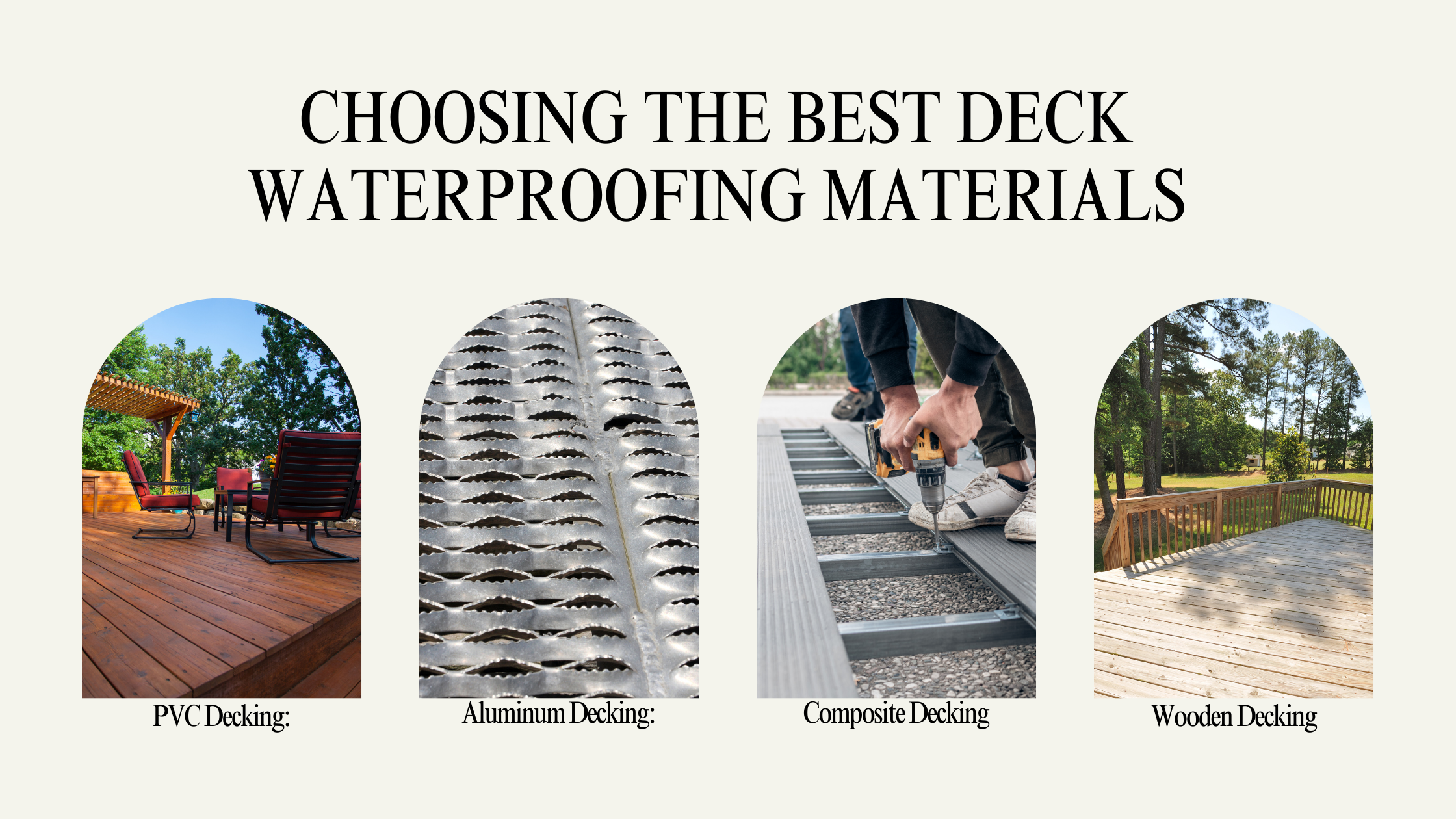
When selecting the best waterproofing material, remember the following options. Our top choices include.
PVC Decking: PVC decking, constructed from durable plastic, offers exceptional waterproofing to safeguard against water damage. Opt for capped boards for extended deck longevity. Ideal for lasting outdoor beauty and minimal maintenance. Choose PVC decking for a worry-free and long-lasting outdoor living space.
Aluminum Decking: Aluminum decking, while a pricier choice, is favored for its exceptional durability and waterproof nature. However, its installation can be challenging due to cutting difficulties. Opt for this long-lasting option for a sturdy and low-maintenance deck.
Composite Decking: Composite decking, a popular choice for outdoor spaces, combines wood and plastic for durability and style. With a range of designs available, this water-resistant material often features capped boards for added protection. Enhance your outdoor living with composite decking’s beauty and functionality.
Wooden Decking: Wooden decking is a classic and popular choice for outdoor spaces, offering a wide range of design options at an affordable price. While wood is naturally water-resistant, it requires additional treatments to enhance its durability. Explore the timeless appeal of wooden decking for your outdoor oasis.
Deck Membranes And Downspouts
Enhancing your deck with a deck membrane and downspout system is a hassle-free solution for waterproofing your deck roof. These systems, available in materials like vinyl, EPDM, and asphalt, are placed between your deck and substructure to direct water towards downspouts, acting as mini-gutters to channel water away. For flat or low-slope roofs, consider using EPDM for its exceptional waterproofing properties.
By implementing this method, you can significantly reduce the need for ongoing maintenance, ensuring your deck remains waterproof throughout changing seasons. Upgrade your deck with this efficient solution to enjoy long-lasting protection against the elements.
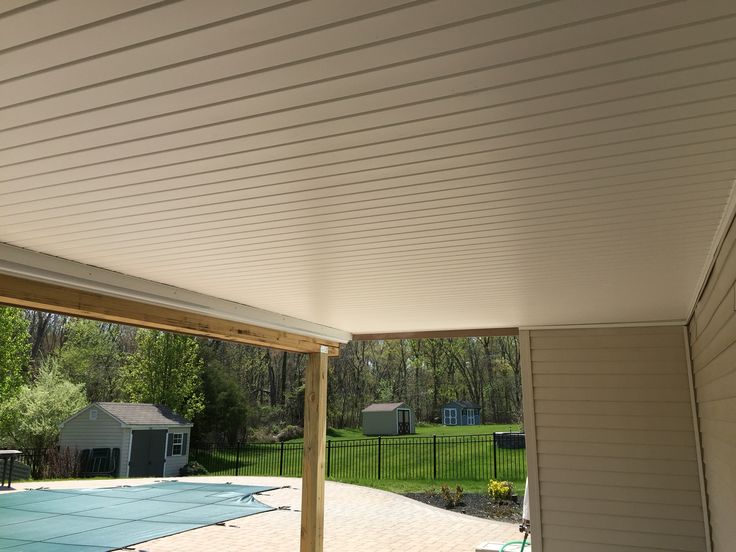
Under-Deck Ceiling Systems
Protect your deck over living spaces with deck membranes and downspouts. These membranes, often PVC-based, block water from seeping through, safeguarding the area below. Downspouts direct water away, preventing pooling. Together, they form a robust waterproofing solution, crucial for preserving your deck and the living space beneath it.
Waterproofing Deck Flanges
For a waterproof deck over living areas, ensure proper installation of deck membranes and downspouts in your under-deck ceiling system. Deck flanges prevent water intrusion, so install them carefully. Securely attach and overlap deck membranes for a watertight seal. Properly position and secure downspouts to prevent water accumulation.
Vinyl Deck Membranes
Ensure effective waterproofing over living spaces by properly installing vinyl deck membranes. Durable and versatile, these PVC-based membranes offer long-lasting protection against water infiltration. When installed correctly, they create a seamless barrier, keeping the living space dry and free from damage. With various colors and textures available, you can customize your deck’s look while maintaining waterproofing. Regular maintenance, including inspections and deck repairs, will extend the lifespan of your vinyl deck membranes.
Waterproof Liquid Deck Coatings
For effective waterproofing, consider waterproof liquid deck coatings like membranes and downspouts. Membranes applied as liquid create a seamless barrier, adaptable to structural movement, preventing leaks. Downspouts divert water, guarding against damage. Proper installation and maintenance ensure lasting protection.
Know How To Waterproof A Deck Over A Living Space With Easy Method : Top Tips
Now, let’s get into how you can waterproof a deck over living space with an easy method. First, gather your materials and plan them out, then prepare the substrate before installing metal flashings. Finally, apply the deck membrane to ensure a waterproof seal over your living space.
Step 1: Gather Your Materials And Plan Them Out
Plan materials meticulously for waterproofing your deck over living space. Gather essentials like waterproofing membrane, seam tape, adhesive, and flashing, ensuring enough coverage. Equip yourself with tools like a utility knife and roller. Consider deck specifics for a streamlined, successful project.
Step 2: Substrate Preparation
Prepare the substrate thoroughly by cleaning it of debris and contaminants. Sweep the surface to remove dirt and use a pressure washer for a deep clean, paying attention to corners and edges. Repair any cracks and ensure a smooth surface before waterproofing.
Step 3: Install Metal Flashings
Before waterproofing, ensure proper installation of metal flashings for essential protection. They prevent water infiltration and direct it away from vulnerable areas. Start with drip edge flashings along edges, then seal joints with flashing strips. Secure counter flashings to enhance water resistance. Properly installed metal flashings ensure long-term durability and waterproofing effectiveness.
Step 4: Apply The Deck Membrane
Now, proceed by applying the deck membrane carefully, ensuring it overlaps flashings and seals tightly at seams and edges. Consider a second coat for added protection. By following these steps diligently, you’ll create a durable, waterproof barrier, safeguarding your living space below.
Key Considerations For A Leak-Proof Deck
For a leak-proof deck, several key considerations must be addressed.
Deck Surface To Slope Away At ¼ Inch Per Foot: Firstly, ensure the deck surface slopes away at a quarter-inch per foot to prevent water pooling.
Proper Flashing Using Deck-Compatible Material: To ensure a leak-proof deck, consider utilizing deck-compatible material for proper flashing. Proper flashing with deck-compatible material is essential to seal vulnerable areas effectively.
Proper Drainage Using Gutters: Consider installing gutters as a key element for achieving a leak-proof deck over living space. Proper drainage is crucial to prevent water from pooling on your deck, causing potential leaks into the living space below.
For a leak-proof deck, prioritize these key factors: slope the deck surface away at ¼ inch per foot, use deck-compatible material for proper flashing, and install gutters for effective drainage. Additionally, don’t forget about the capital deck and stair waterproofing for comprehensive protection. Ensure your deck stays dry and durable.
Frequent Asked Questions About Waterproofing A Deck Over Living Space
1. Is It Possible To Waterproof An Existing Deck?
Yes, it’s possible to waterproof an existing deck by applying a waterproofing membrane or coating over its surface, ensuring proper sealing and protection against water intrusion.
2. What Is The Cost to Waterproof A Deck?
The cost to waterproof a deck varies depending on factors like deck size, chosen waterproofing method, and labor costs. On average, it can range from a few hundred to several thousand dollars.
3. How Long Does It Take To Waterproof A Deck?
The time it takes to waterproof a deck depends on factors such as the size of the deck, the chosen waterproofing method, and weather conditions. Typically, it can take anywhere from a few days to a couple of weeks to complete the process.
4. Waterproofing Deck Over Conditioned Space, How?
To waterproof a deck over conditioned space, start by selecting a deck membrane material like vinyl or EPDM. Prepare the substrate thoroughly, then install metal flashings for added protection. Finally, apply the chosen deck membrane to ensure durability and waterproofing.
5. Exterior Deck Over Living Space But How to Waterproof?
When waterproofing over an exterior deck above living space, ensure proper support, slope, and flashing. Follow these steps for waterproofing: use approved roofing membrane, add drainage mat, install a mud bed with reinforcing wire, apply uncoupling mat, seal seams with right material, and tile. Ensure proper slope away from the house. Plan for spring installation for optimal results. Visit us for detailed instructions.
6. Sealing/waterproofing a Deck Over Living Space Solutions
Ensure your deck over living space is properly sealed and waterproofed by installing a heavy rubber roof system over sloped insulation, followed by a wood deck on sleepers. It’s crucial to have a professional contractors this complex task due to the technical expertise required. Additionally, consider a roofing system underneath the wooden decking, such as rubber or bitumen, to enhance protection. Prioritize the integrity of the roofing system to safeguard both the wood and underlying structure effectively.
7. How to Water Proof Your Second-Story Deck?
To waterproof your second-story deck, consider applying a high-quality sealant, ensuring proper drainage, and using waterproofing membranes. Regularly inspect for any signs of damage or wear to maintain a durable and protected deck.
8. What Are the Best Tips for Waterproofing a Deck Over a Living Space?
To effectively waterproof a deck over a living space, start by selecting high-quality materials like vinyl deck membranes or waterproof liquid coatings. Next, ensure you hire a skilled deck builder for proper installation. Additionally, check if your chosen decking material is approved for roofing purposes. These steps will help protect your deck and living space from water damage, ensuring durability and longevity.
What Sets Patio Waterproofing Solutions Apart From Other Deck Systems?
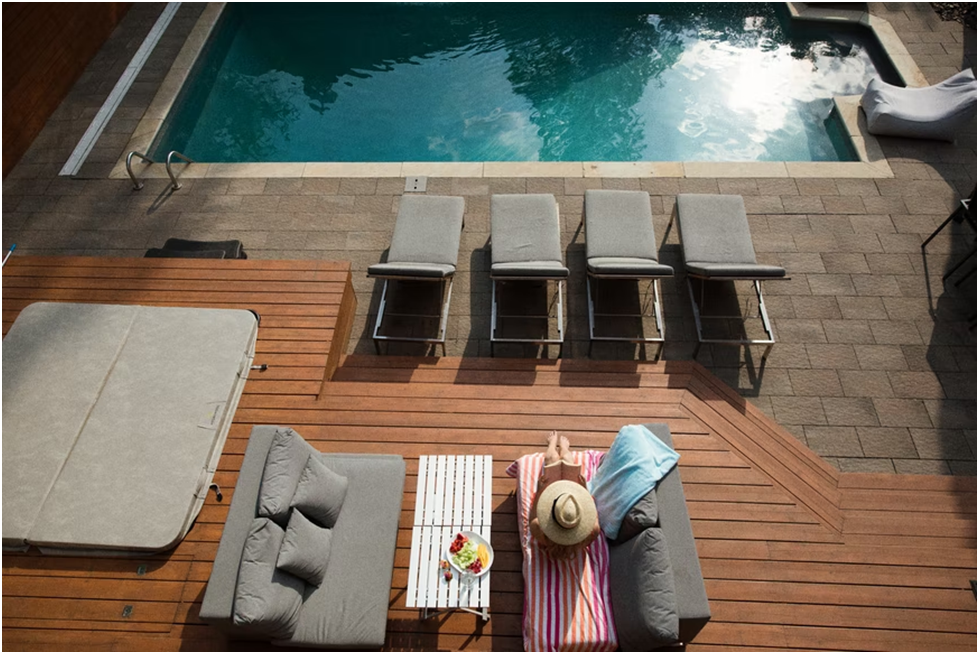
Are you looking to upgrade your deck with a reliable and long-lasting solution? Patio waterproofing solutions may be just what you need. In this blog, we will explore what sets patio waterproofing apart from other deck systems. You’ll discover the benefits of choosing this innovative option for your outdoor space and why it stands out in terms of durability and performance. By the end, you’ll understand why patio waterproofing solutions are a smart choice for protecting your deck from the elements. So if you’re ready to enhance your deck’s longevity and maintain its pristine condition, keep reading to learn more about the advantages of patio waterproofing solutions.
The Benefits of Patio Waterproofing Solutions
When considering patio waterproofing solutions, you’ll appreciate the long-lasting protection they offer against moisture and weather damage. These systems also provide customized options to suit your specific aesthetic preferences and functional needs. With easy maintenance requirements, patio waterproofing solutions stand out as a convenient and durable choice for your outdoor space.
Long-lasting Protection
For long-lasting protection, consider patio waterproofing solutions over traditional deck systems. Patio waterproofing solutions are designed to provide a durable barrier against moisture, preventing water damage and extending the lifespan of your outdoor space. Unlike traditional decks that can be prone to rotting, warping, and decay over time, patio waterproofing systems offer superior resistance to the elements. By investing in a high-quality waterproofing solution for your patio, you can enjoy peace of mind knowing that your outdoor area is well-protected for years to come. With minimal maintenance required, these systems offer a cost-effective way to ensure the longevity of your patio while maintaining its aesthetic appeal. Make the smart choice and choose patio waterproofing for lasting protection.
Customized Options
Consider customizing your outdoor space with personalized options that cater to your specific needs and style preferences. Patio waterproofing solutions offer a range of customized options that set them apart from other deck systems. From choosing the color and texture of the waterproof coating to selecting different finishes like matte or glossy, you have the flexibility to create a patio that suits your taste perfectly. You can opt for additional features such as built-in drainage systems, decorative patterns, or even integrated lighting to enhance the functionality and aesthetics of your outdoor space. By tailoring these elements to your liking, you can ensure that your patio not only provides long-lasting protection but also reflects your unique personality and design vision.
Easy Maintenance
Maintaining your outdoor space becomes a breeze with easy-to-clean and durable finishes for your patio. Unlike other deck systems that require constant upkeep, patio waterproofing solutions are designed to be low maintenance, saving you time and effort. With a simple cleaning routine using mild soap and water, you can easily keep your patio looking fresh and new. The materials used in these waterproofing systems are resistant to stains, mold, and mildew, making them the ideal choice for busy homeowners who want to enjoy their outdoor space without the hassle of frequent maintenance. Say goodbye to scrubbing and staining – with patio waterproofing solutions, keeping your outdoor area in top shape has never been easier.
Read More Blogs: 5 Signs Your Patio Needs Waterproofing: Don’t Wait Until It’s Too Late
Why Patio Waterproofing Solutions Stand Out
When it comes to patio waterproofing solutions, what sets them apart is their superior quality, expert installation, and industry-leading warranty. You can trust that these systems are built to last and provide long-term protection for your outdoor space. With professional installation and a solid warranty backing, you can enjoy peace of mind knowing your patio will stay dry and beautiful for years to come.
Superior Quality
When it comes to durability and protection against the elements, patio waterproofing solutions stand out for their top-notch quality. These systems are designed to provide long-lasting performance, ensuring that your outdoor space remains safe and secure for years to come. With superior materials and expert installation techniques, patio waterproofing solutions offer unmatched strength and resilience, making them the ideal choice for any homeowner looking to enhance their outdoor living area. Say goodbye to worries about water damage or mold growth – with patio waterproofing solutions, you can enjoy peace of mind knowing that your deck is built to last and withstand even the harshest weather conditions.
Expert Installation
Now that you understand the superior quality of patio waterproofing solutions, let’s talk about expert installation. When it comes to ensuring your deck is properly protected from water damage, having a knowledgeable and skilled team handling the installation is crucial. Expert installers have the experience and training to accurately assess your space, choose the right materials, and execute the waterproofing process with precision. Their attention to detail can make all the difference in how effective and long-lasting your waterproofing solution will be. By entrusting your project to professionals who specialize in patio waterproofing, you can have peace of mind knowing that every step of the installation process is being handled with care and expertise.
Industry-leading Warranty
By choosing our expert installation team, you can rest assured that your patio will be backed by an industry-leading warranty, providing you with peace of mind for years to come. Our industry-leading warranty sets us apart from other deck systems by guaranteeing the quality and durability of our waterproofing solutions. With this warranty in place, you can trust that your patio will be protected against any unforeseen issues or damages that may arise. This commitment to standing behind our work showcases our confidence in the materials and techniques we use, giving you added reassurance as a homeowner. Don’t settle for less when it comes to protecting your outdoor space – choose a patio waterproofing solution with an industry-leading warranty for ultimate peace of mind.
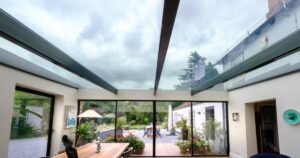
Why Choose Patio Waterproofing Solutions for Your Deck System?
When it comes to protecting your deck from water damage, patio waterproofing solutions stand out for their durability and effectiveness. Choosing a patio waterproofing system for your deck offers numerous benefits that set it apart from other options on the market. Not only does it provide a seamless and watertight seal, but it also ensures long-lasting protection against moisture infiltration. With patio waterproofing solutions, you can enjoy peace of mind knowing that your deck is safeguarded against leaks, mold, and structural damage caused by water exposure. Additionally, these systems are low maintenance and easy to clean, making them a convenient choice for homeowners looking to enhance the longevity of their outdoor living space. Make the smart choice and choose patio waterproofing solutions for your deck today!
Ready to Protect Your Deck with Patio Waterproofing Solutions?
Looking to shield your outdoor space from water damage? Patio waterproofing is the way to go! By choosing patio waterproofing solutions for your deck, you are investing in a long-lasting and effective protection against moisture, leaks, and rot. These specialized systems are designed to create a seamless barrier that prevents water from seeping into the structure of your deck, ultimately extending its lifespan and maintaining its appearance. With patio waterproofing solutions, you can enjoy peace of mind knowing that your deck is well-protected against the elements, allowing you to make the most of your outdoor living space without worrying about potential water damage. So why wait? Take the necessary steps today to protect your deck with patio waterproofing solutions!
Ready to safeguard your outdoor oasis? Contact us now to learn more about our capital deck and stair waterproofing services and get started on enhancing the longevity and durability of your deck!
Enhance Safety and Longevity with Commercial Deck Waterproofing

Commercial deck waterproofing is an essential aspect of maintaining the safety and longevity of these structures. Ignoring this crucial maintenance task can lead to a range of risks, including structural damage, safety hazards, and costly repairs. This blog aims to highlight the importance of commercial waterproofing services for business decks and why it should be considered a smart investment. By adopting an objective and impersonal approach, we will explore the steps involved in ensuring that commercial decks are safely waterproofed. Additionally, we will introduce Capital Deck & Stair Waterproofing as a leading provider in the field of commercial deck waterproofing.
The Risks of Ignoring Commercial Deck Waterproofing
Overlooking commercial deck waterproofing jeopardizes the structure’s safety and lifespan, leading to expensive repairs or even collapse. Waterproofing shields decks from moisture-induced damages like rotting and warping. Without it, water seeps through, weakening the deck’s foundation. This moisture fosters mold and mildew growth, which not only impacts health but also hastens material degradation. Moreover, water near electrical systems can spark short circuits or fires, posing a grave risk. Corrosion of metal components is another consequence of prolonged moisture exposure. In essence, neglecting deck waterproofing has severe repercussions, from structural damages to potential safety hazards. It’s imperative for property overseers to ensure regular maintenance and robust waterproofing for commercial decks.
Why Should You Consider Commercial Waterproofing Services?
Professional waterproofing services are essential for property owners to safeguard their decks against water damage and increase longevity. These services bring numerous advantages, making them a smart investment.
Firstly, they use state-of-the-art techniques and top-notch materials, ensuring the deck’s robust protection. Their expertise allows for the early identification of potential issues, offering customized solutions to stave off damage and save on future repairs.
Secondly, they play a vital role in preserving the deck’s structural integrity. Issues like wood rot, mold, and surface deterioration can jeopardize a deck’s stability. By availing of waterproofing services, these risks are substantially minimized, ensuring safety.
Moreover, the aesthetic appeal of the deck is elevated with waterproof coatings available in diverse finishes and colors. This not only guards the deck but also enhances the property’s visual allure. In essence, commercial waterproofing services offer an all-encompassing solution, ensuring decks remain both attractive and durable.
Why Waterproofing Your Business Deck Is a Smart Investment
Investing in professional waterproofing services offers numerous benefits for your business’s outdoor structures:
Safety Enhancement: Waterproofing prevents water infiltration, thereby averting potential structural damages like rotting. This ensures the deck’s stability, safeguarding employees and customers.
Longevity: Moisture exposure can cause warping, cracking, and discoloration. Waterproofing offers a protective layer against such damages, prolonging the deck’s life.
Cost-Efficiency: While there’s an upfront cost for waterproofing, it prevents expensive repairs or replacements in the future. This makes it a cost-effective choice in the long run.
Aesthetic Preservation: Beyond structural benefits, waterproofing maintains the deck’s appearance, shielding it from moisture-induced deterioration.
In summary, waterproofing is a prudent investment for businesses, ensuring the deck’s safety, longevity, and aesthetic appeal, while potentially saving on future costs.
Read Blogs: What Does Commercial Waterproofing Cost?
Steps to Ensure Your Commercial Deck is Safely Waterproofed
We will focus on three key points to ensure the safe waterproofing of your commercial deck. Firstly, conducting a thorough inspection and assessment of the deck is crucial in identifying any existing issues or potential problem areas that need to be addressed. Secondly, choosing the right materials and techniques for waterproofing is essential to ensure long-term effectiveness and durability. Lastly, regular maintenance and follow-ups are necessary to maintain the integrity of the waterproofing system and address any emerging issues promptly.
Inspection and Assessment
Ensuring the safety and longevity of commercial decks begins with a rigorous inspection and assessment. This step uncovers existing issues and potential vulnerabilities that might jeopardize the waterproofing system. Inspecting the deck structure, from support beams to fasteners, highlights signs of wear or damage. It’s also important to consider factors like weather exposure, foot traffic, and past maintenance. A comprehensive inspection not only guides waterproofing efforts but also promotes a safer environment by preventing issues before they escalate.
Choosing the Right Materials and Techniques
The durability and efficacy of commercial decks hinge on selecting the right waterproofing materials and techniques. Material choices should offer robust waterproofing, be resistant to UV rays, chemicals, and foot traffic. Among the popular choices are liquid membranes, sheet membranes, and elastomeric coatings. Additionally, factors like the deck’s slope, preparation needs, and budget determine the best waterproofing technique. Thoughtful material and method selection ensures the deck’s safety and extended lifespan.
Maintenance and Follow-ups
For a commercial deck’s continued performance, regular maintenance and follow-ups are indispensable. Routine cleaning eliminates accumulated dirt and debris. Periodic inspections spotlight damages or wear, necessitating prompt repairs. It’s also vital to periodically evaluate the deck’s overall condition, noting any changes since the last assessment. Such proactive upkeep not only amplifies safety but also prolongs the deck’s functional life.
Capital Deck & Stair: Leading the Way in Commercial Deck Waterproofing
Capital Deck & Stair sets the industry standard for commercial deck waterproofing, ensuring enhanced safety and increased longevity for outdoor structures. As a leading provider in the field, Capital Deck & Stair offers top-quality services that protect decks from water damage and extend their lifespan.
Capital Deck & Stair Waterproofing sets itself apart with its dedication to superior materials and advanced waterproofing systems, offering resilience against weather and water damage. The experienced team tailors solutions to each deck’s unique needs, ensuring optimal protection against moisture-induced issues like rotting and mold. Furthermore, the company’s commitment extends beyond initial services, offering meticulous maintenance plans and proactive follow-up services to uphold the integrity of the waterproofing and extend deck life. In essence, Capital Deck & Stair ensures durable, safe, and long-lasting outdoor structures, making it a top choice for property owners seeking premium waterproofing solutions.
Conclusion
Waterproofing commercial decks is a paramount step in assuring both safety and longevity. Through meticulous inspection, selecting the right materials and techniques, and consistent maintenance, one can mitigate potential damages and costly repairs. Capital Deck & Stair exemplifies excellence in this realm, standing out with its dedication to high-quality materials, expertise, and unwavering commitment to client satisfaction. Their holistic approach, combining cutting-edge techniques with proactive maintenance, makes them a preferred choice for businesses. Investing in top-notch waterproofing services, like those offered by Capital Deck & Stair, ensures a safe, durable, and aesthetically pleasing deck for years to come.
Signs You Need Deck Repair (and How to Avoid It)
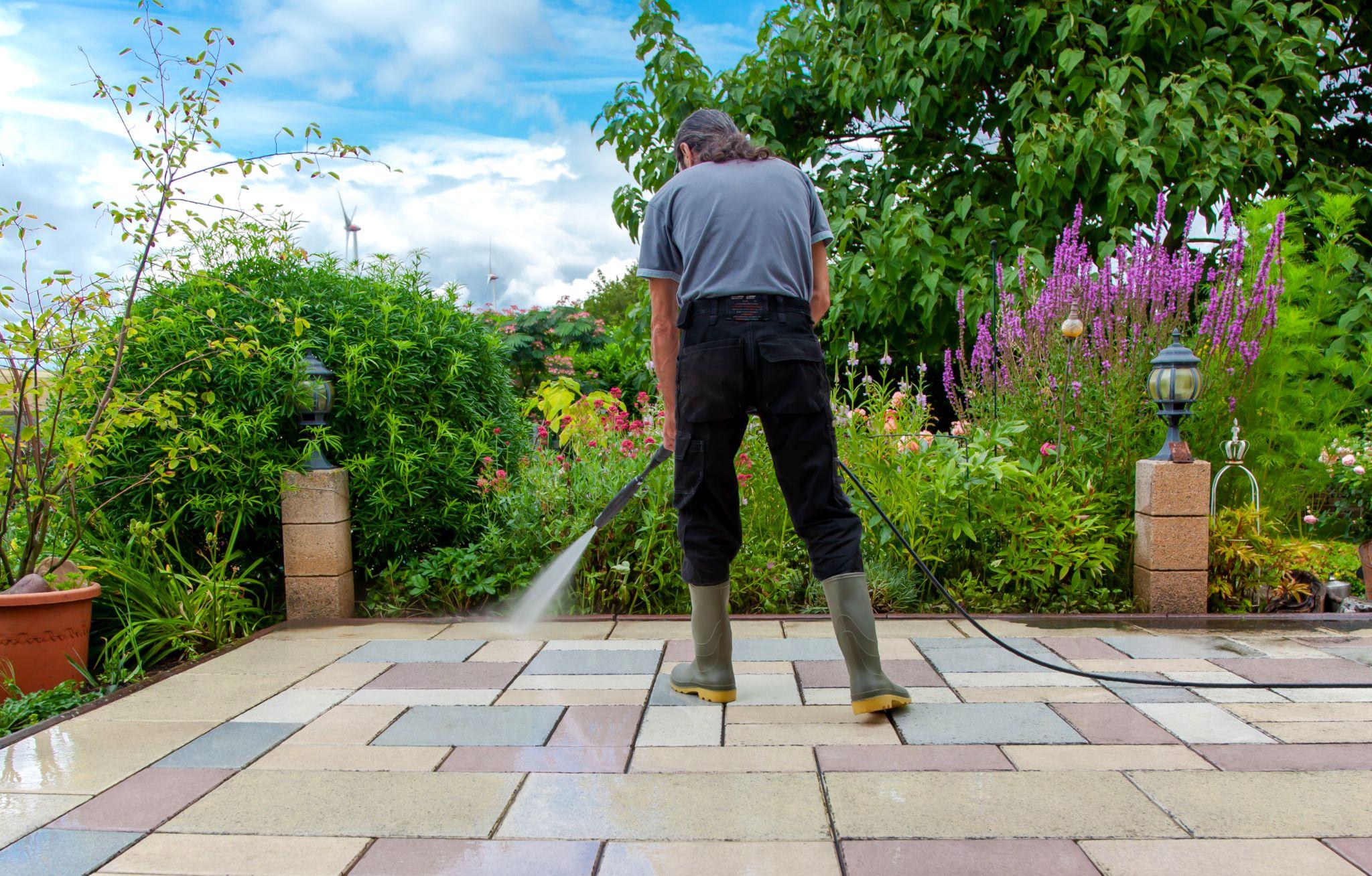
Nobody’s deck is perfect—especially those that get a lot of regular use—but how do you know if the odd crack or chip is a sign of deeper damage? Here, we’ll review some of the telltale signs of damage that require deck repair and what you can do to prolong the life of your outdoor surfaces.
There’s a good chance that your deck gets a lot of wear and tear.
Between regular foot traffic, heavy furniture, and constant exposure to rain and weather, decks and outdoor surfaces take a bigger beating than many might realize. While light damage and worn areas aren’t unusual (if anything, they’re expected), some signs of damage call for immediate attention and deck repair.
Thankfully, most serious signs of deck damage are relatively easy to spot. Read on to learn what to look for and a few quick maintenance tips that can help you avoid expensive deck repair.
6 Key Signs of Deck Damage
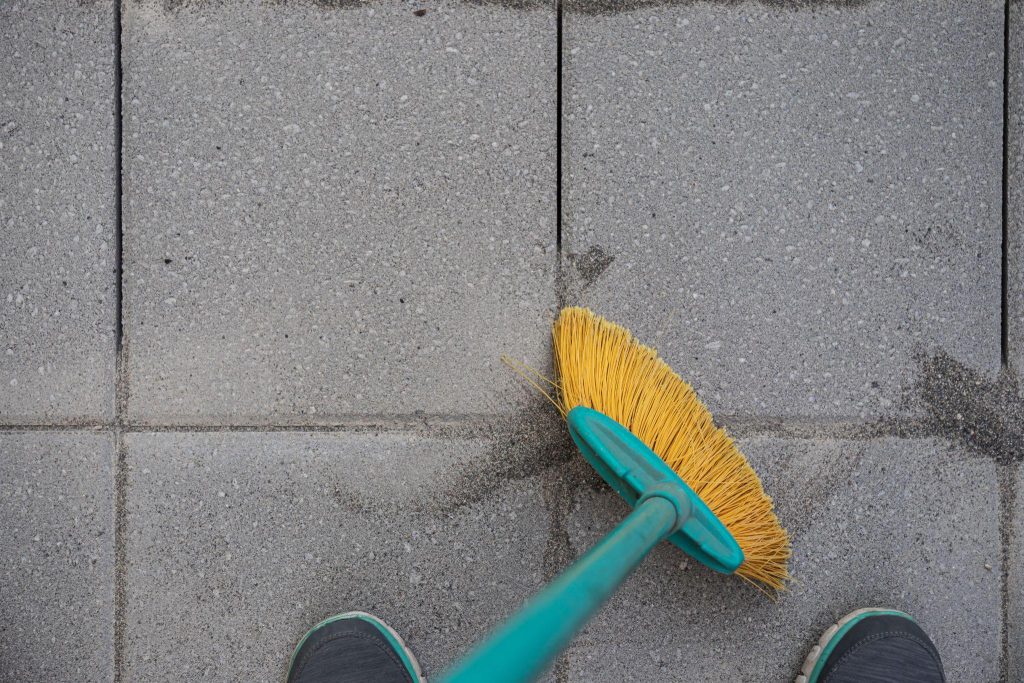
From cracks to curling and uneven surfaces, there’s plenty of warning signs to look out for—and you may not have all of them. In any case, you may need deck repairs if you notice any one (or more) of the following signs.
1. Cracking and Crazing on Surfaces
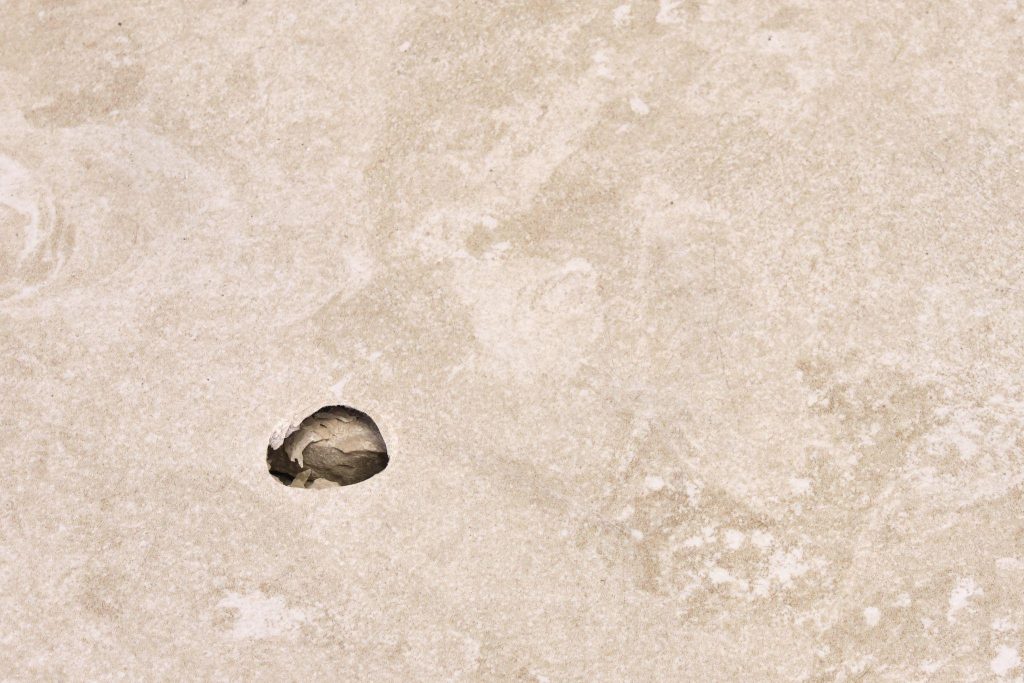
The first and most common sign of a damaged surface is cracking, especially on concrete and masonry surfaces.
Cracks form on surfaces for many reasons. While you can expect some small cracks over time, cracks on a new surface can indicate that materials like concrete dried too rapidly. Here, if water leaves unset concrete too fast, the remaining solids won’t have time to fill in the empty space before they crack and leave little cracks and fissures as a result.
Of course, cracks are most common on older deck surfaces and are often the result of long-term wear and tear. Similarly, crazing (fine, surface-deep cracks) in your deck’s coating is another sign of damage.
Cracks and crazing often call for immediate attention. While the odd crack or two is no big deal, too many can cause additional water infiltration and—you guessed it—even more damage.
2. Low Spots, Curling, and Uneven Surfaces
Uneven surfaces are another major sign that it’s time for repairs. In the worst cases, it can also be a sign of improper installation of materials such as concrete and masonry.
Common examples include low spots or “dips” in the surface, as well as curling around the outer edges. In both new and old decks, these signs usually indicate an unstable foundation, material warping, and improper installation (such as rapid drying in the case of concrete).
As you may imagine, these signs can either show up immediately after installation or may develop over time. In the latter case, it’s usually a sign of water infiltration, which can be avoided with a waterproof deck coating.
3. Blistering and Flaking
While less severe than cracks and uneven surfaces, blistering and flaking of surface coatings can be the precursors of more serious damage.
This type of damage is usually caused by regular wear and tear. However, it can sometimes be the result of improper application of paint and coatings, such as not applying the correct primer for a certain material.
In any case, it’s important to address these issues before they give way to water infiltration and other types of damage. Thankfully, surface coatings are usually the least expensive deck treatments and can prolong surface life for many years. Even decks in good condition should consider surface treatments such as waterproof coatings.
4. Discoloration
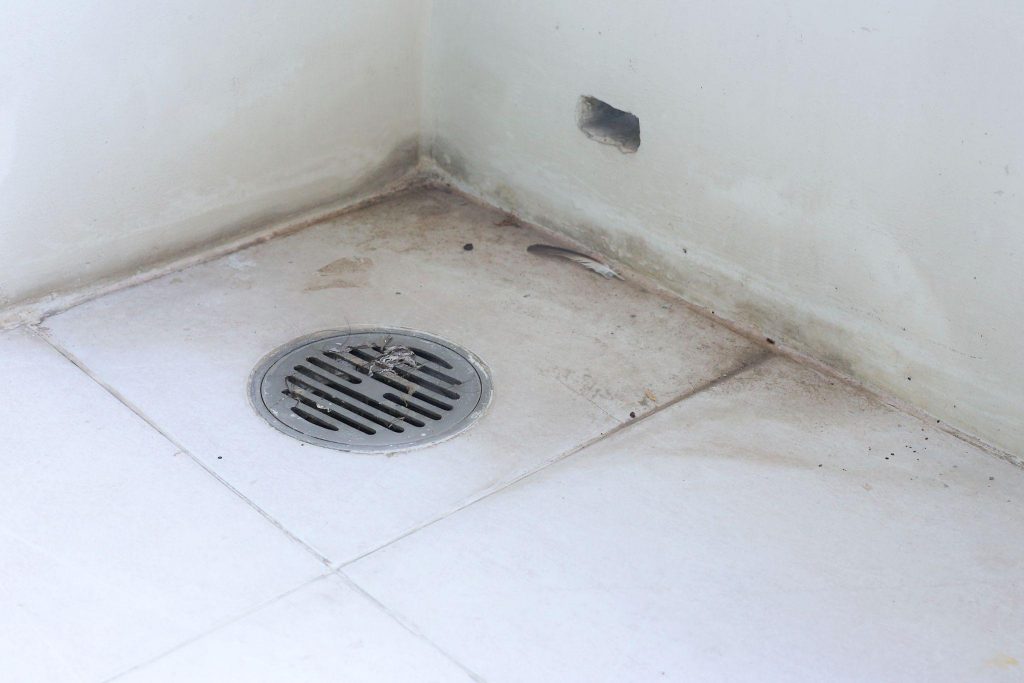
Discoloration isn’t just ugly; it may also be the sign of some serious damage lurking underneath.
While discoloration can sometimes result from surface-level stains and spills, it can also result from deep-seated water damage. As a result, keep a close eye on discoloration—especially if it’s in an unusual area and wasn’t caused by a known spill.
As a general rule, most surface-level stains can usually be cleaned, whereas those caused by discoloration usually can’t. This is another great reason why keeping your deck clean is such a crucial part of maintenance.
5. Loose Railings and Posts
As many railings and posts are supported by your deck’s surface in some way, damage will usually cause them to come loose. Depending on the material, however, loose fittings may also result from poor installation or maintenance.
Though railings, posts, and other deck fittings are relatively less expensive to replace, any repair may be a wasted investment if any underlying causes or existing problems aren’t addressed. As a result, give your deck a thorough inspection to determine whether loose fittings are the result of simple wear and tear or a bigger issue.
6. History of Poor Maintenance
If you know your deck hasn’t been maintained very well, there’s a good chance it needs repairs—especially if it’s already showing the warning signs we’ve outlined so far.
While nobody wants to pay for expensive repairs, it’s a great opportunity to save yourself time and money in the future. Between waterproof coatings and some easy maintenance tips, you can prolong the life of your current or existing deck.
3 Easy Maintenance Tips for Avoiding Deck Repair
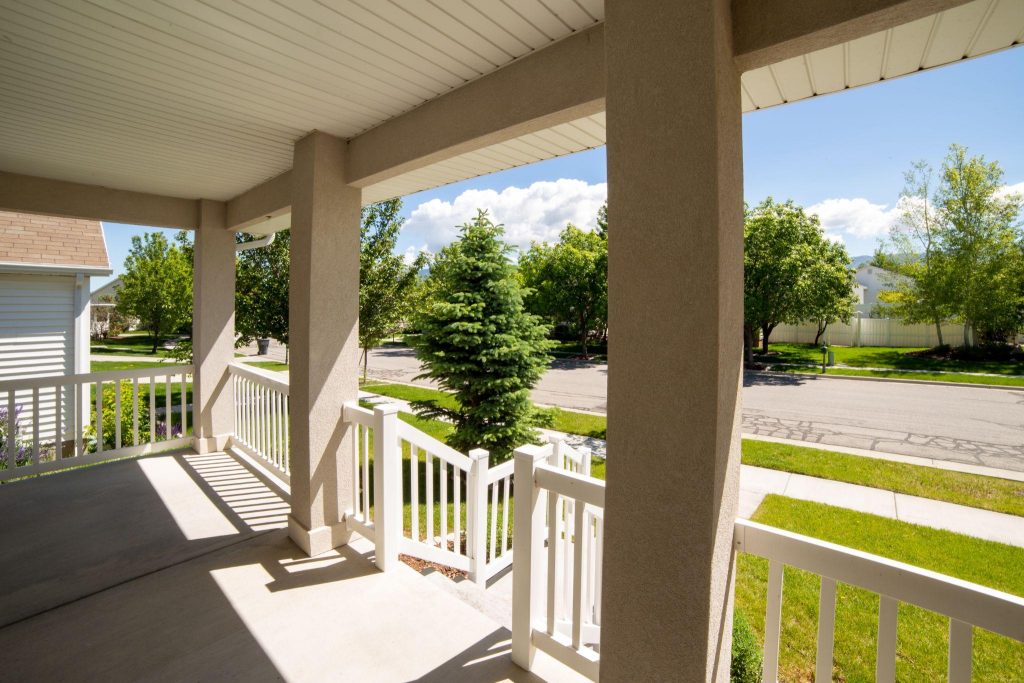
Since deck damage is often a very slow process, regular maintenance is often all it takes to prevent it entirely. Here are a few key tips to stay on top of it:
1. Keep the surface clean and dry.
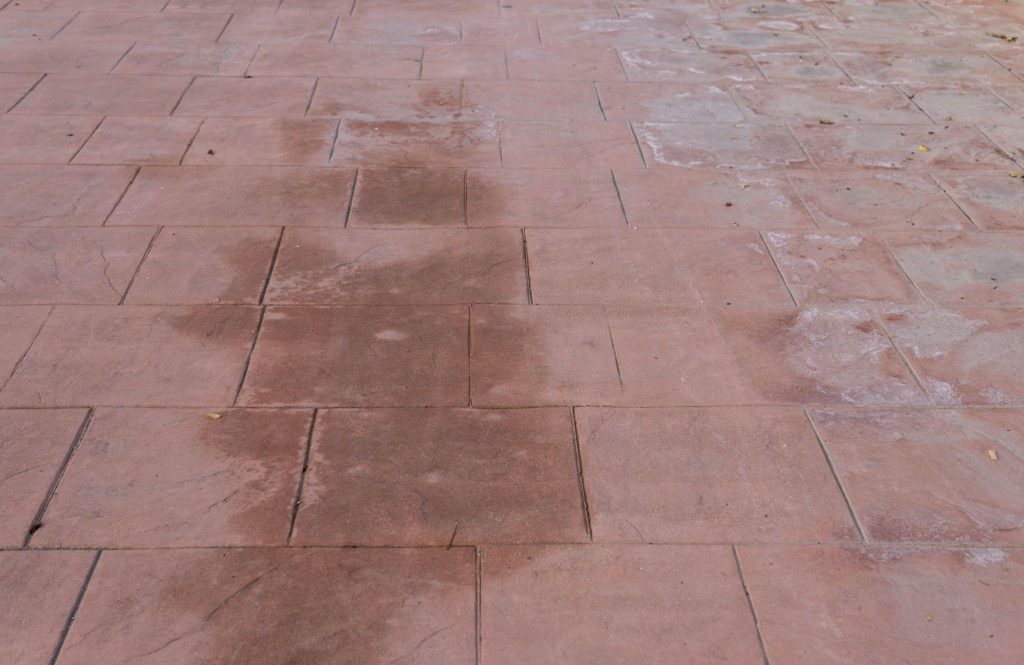
Wet and dirty surfaces can quickly lead to rot, resulting in mold, mildew, rot, and other hazardous effects of water damage.
By keeping your deck surface clean and dry, you’ll reduce the risk of water infiltration while also keeping your outdoor spaces neat and tidy. Regular cleaning also gives you the opportunity to inspect your deck for cracks, discoloration, and other early warning signs of expensive damage.
2. Regularly move furniture and plants.
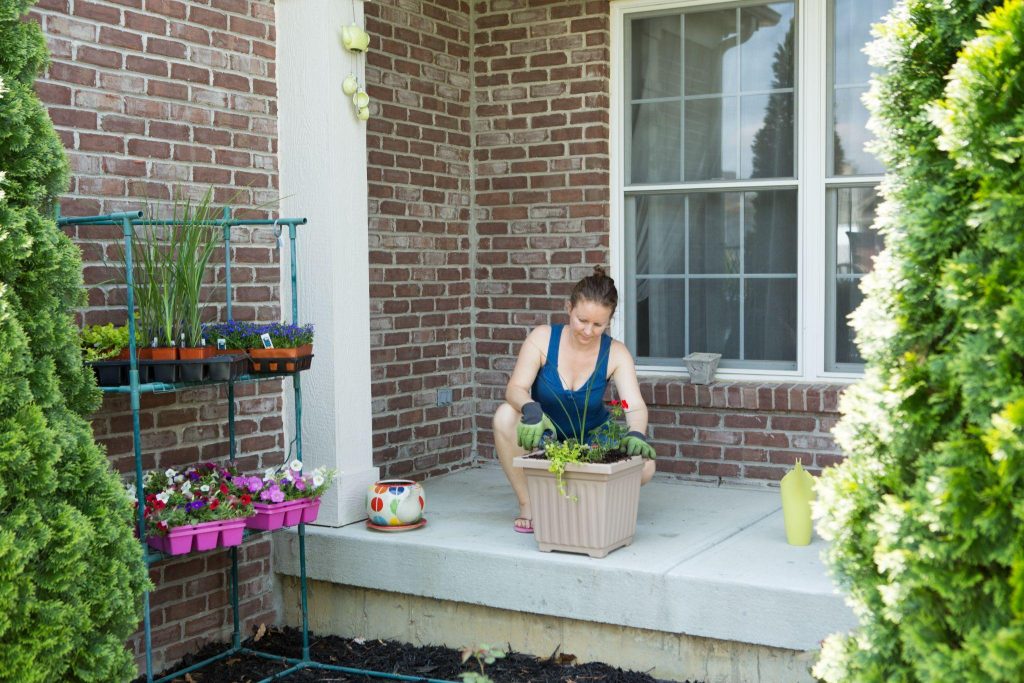
Regularly rearranging furniture, plants, and other outdoor fixtures helps “even out” the wear on your deck. In doing so, you’ll prevent any one place from becoming damaged through too much exposure or foot traffic.
Also, like with cleaning your surface, regular rearrangements are a great way to spot damage that would’ve otherwise gone unnoticed.
3. Apply a waterproof coating.
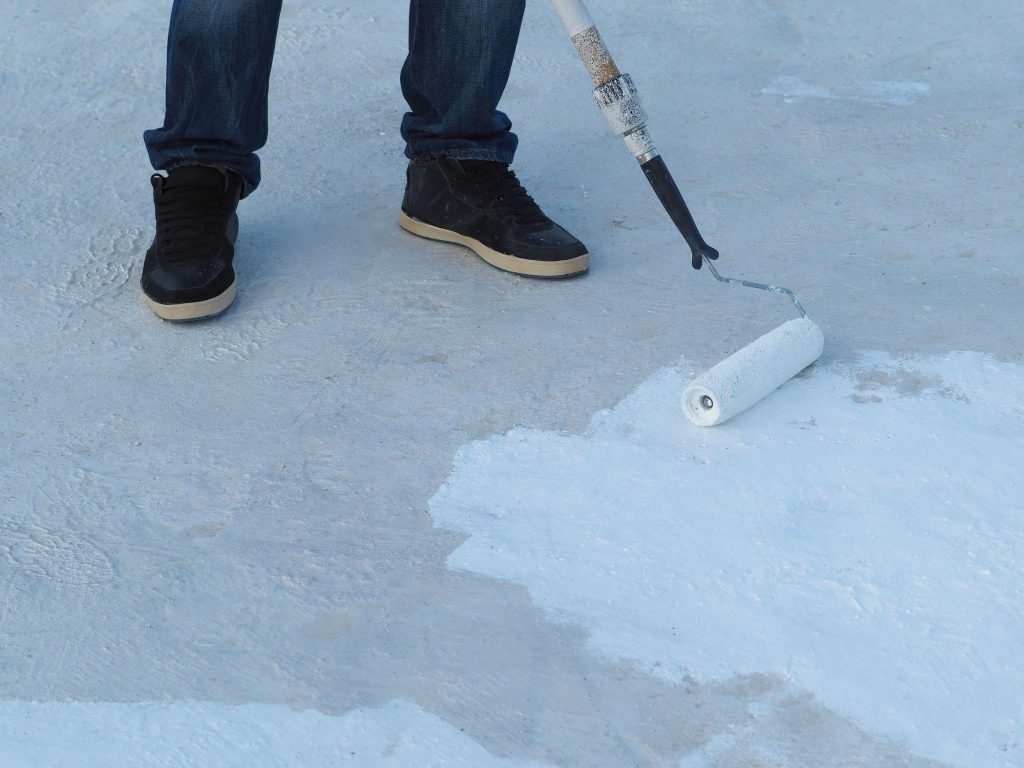
Waterproof coatings don’t just protect your deck—they also make maintenance much easier.
Since a waterproof coating completely seals your deck’s surface material from the elements, you won’t have to worry about many of the signs of damage we’ve covered here. Instead, you’ll just need to keep it clean and reapply the coating once every 5-10 years
While even waterproof decks are susceptible to damage, they’re far more durable than decks using conventional coatings and sealants. While it’s possible to DIY, the best results can only be guaranteed by an experienced professional.
Protect Your Deck with a Waterproof Coating from Capital Deck & Stair
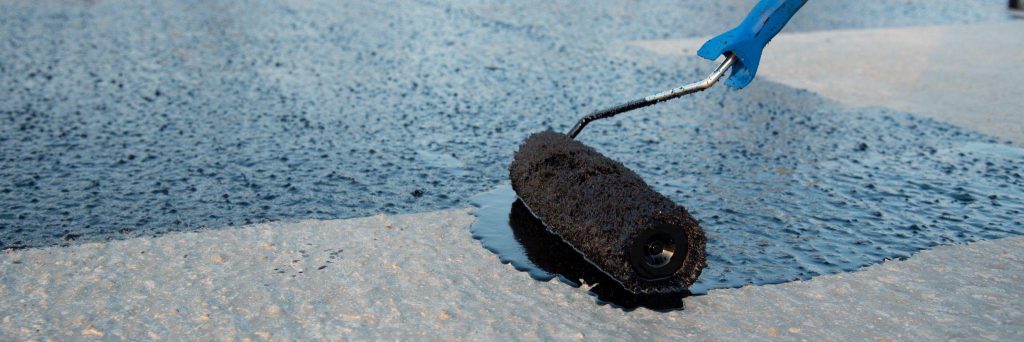
A waterproof deck coating is the most effective way to avoid expensive deck repair and damage. With complete waterproofing services from Capital Deck & Stair, you can rest assured that your deck will be sealed from the elements for years to come.
For more information on and to schedule an appointment, explore our leisure deck services, or call us at (888) 508-2966.
How Much Does Deck and Balcony Waterproofing Cost?

An outdoor leisure deck or balcony isn’t truly complete until it’s sealed and waterproofed. Without a waterproof deck coating, rain and the elements will quickly tarnish and deteriorate the surface until it needs repairs—or a complete replacement!
While you may be hesitant to invest even more money into your deck or balcony after you’ve already built or refurbished it, a waterproof coating is crucial for getting the most value for your money. Just how much does deck or balcony waterproofing cost? Read on to find out what determines the price tag and how you can get the best deal.
How Much Does Deck Waterproofing Cost?
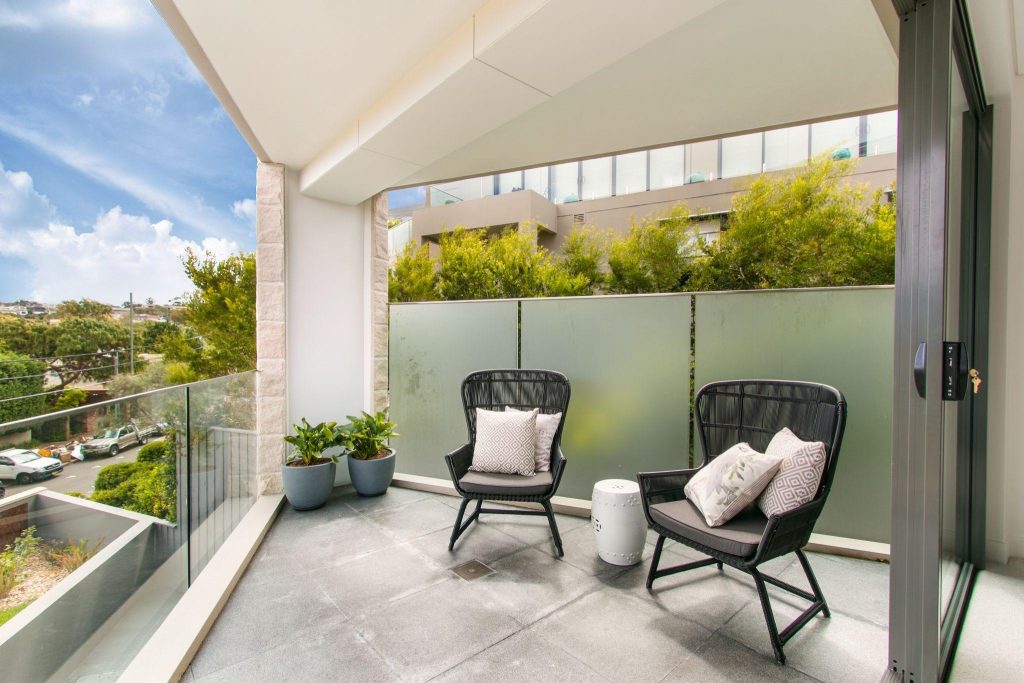
Estimating the cost of waterproofing isn’t entirely straightforward. As with basically any large home project, there are more factors and variables involved than meet the eye. While it may be nice to think that cost would just come down to square footage, your deck’s material, location, size, and other variables can all affect the price.
Cost Factors of Waterproofing
While every waterproofing project is different, cost is usually determined by a combination of factors such as:
- Size: What’s the square footage of your deck? As with any finishing project, the larger your deck, the more attention it needs and the more it will cost to get the job completed.
- Products: There’s plenty to choose from when it comes to waterproof coatings and sealants. That means there’s also a lot of prices to choose from. Depending on how you want your deck to look and how long you want it to last, you’ll probably need one or more products of certain quality and in certain amounts. Higher-quality products, of course, come at a higher cost.
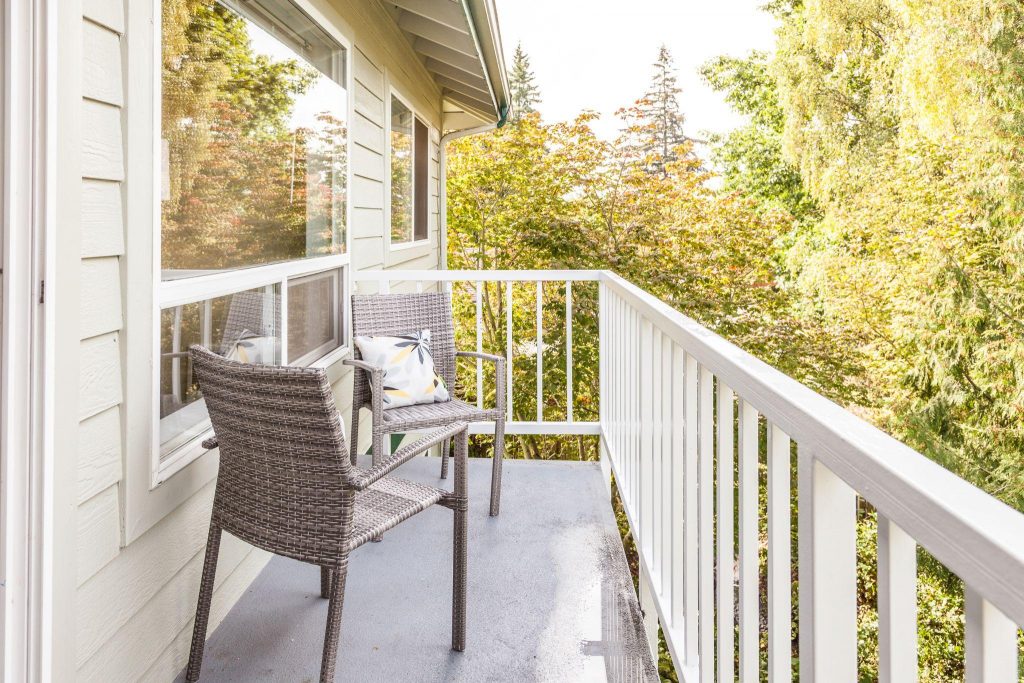
- Speed: How soon do you want your deck waterproofing job finished? Sometimes you can pay a little more to have the job expedited or handled by more crew members. Other times, however, you may be fine saving more money by having it done at a slower pace.
- Cleaning: Is your deck even ready to be waterproofed? Your deck might need to be cleaned and prepped thoroughly before a waterproof coating or sealant can be applied. While most reputable waterproofing companies will handle this step, it may add to the final cost of the project.
- Professionalism: There’s more to waterproofing a deck than slathering on a coating of sealant! If you value end-product quality, you’ll want to hire industry professionals. While it may be tempting to “hire” your neighbor or friends to waterproof your deck for the cost of a few pizzas, the final result will most likely suffer.
Determining an Estimate

So, how can you combine these factors to determine deck or balcony waterproofing cost? Scope and quality are the key factors in determining cost. As you might imagine, larger projects cost more than small ones, just as high-quality materials and workmanship cost more than low-quality materials and amateur workmanship.
Even so, it’s still a bit difficult to determine project cost based on scope and quality alone. While you can measure the square footage of your deck and calculate a rough estimate based on the price of a waterproof coating, the resulting estimate would neglect prep, labor, and other considerations depending on your deck.
Ultimately, cost can vary widely depending on your deck and where you live. In fact, the same deck in two different locations can have entirely different waterproofing costs!
The best way to get an estimate is to contact your local waterproofing professional. That’s why our team at Capital Deck & Stair is happy to provide free estimates for every project.
In any case, however, waterproofing generally isn’t too expensive. It can even pay for itself, considering the potential cost of deck replacement due to water damage.
Get a FREE Estimate from Capital Deck & Stair
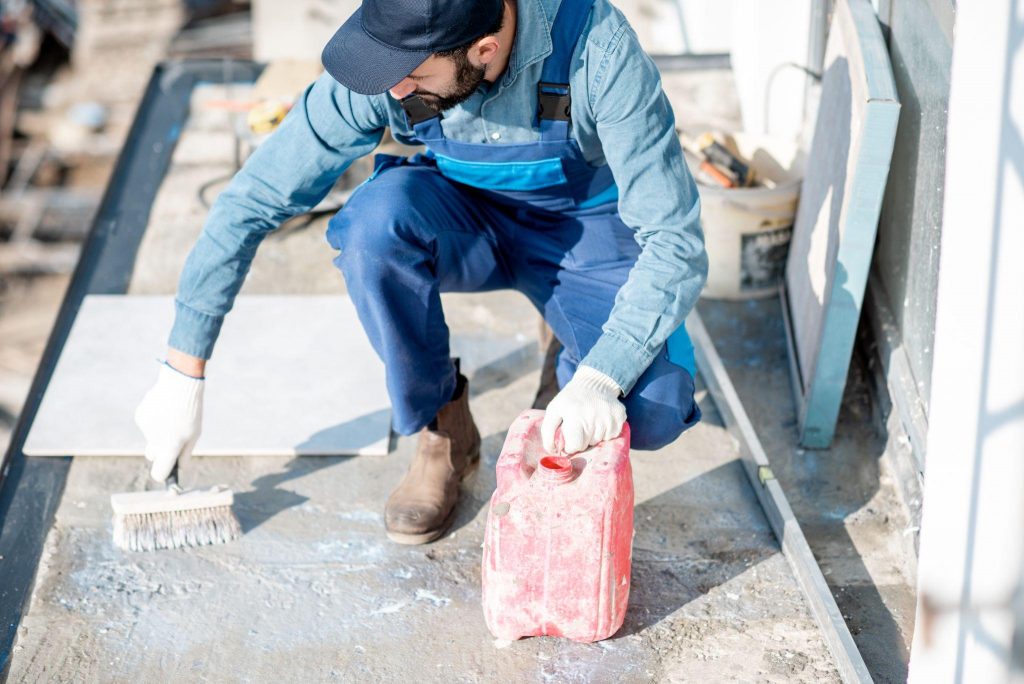
With over 30 years of waterproofing experience, we’ve seen enough projects to provide our customers accurate, upfront estimates for their waterproofing needs. We’ll even do it for free!
Capital Deck & Stair is a family-owned and operated company serving residential and commercial customers throughout Los Angeles and Orange County. In addition to a free estimate, all of our work is backed by competitive pricing, professional results, and an 8-year warranty. We’ll even work around your schedule (including weekends) to ensure the job gets done on your terms.
For more information on our waterproofing services and to request a FREE estimate, call Capital Deck & Stair at (888) 508-2966 or contact us.
Concrete Pool Deck Paint Ideas: 5 Popular Colors and Designs

A fresh coat of paint is a great way to breathe new life and color into your concrete pool deck.
Since concrete easily takes to paint, texturing, and various surface finishes, there’s plenty of possibilities when it comes to designing the perfect pool deck. With so many colors and designs to choose from, how do you know which options are best for your pool deck?
In this post, we’ll run through some of the most popular concrete pool deck paint colors and designs and discuss how each choice can help your pool deck blend into its surroundings. Read on to learn more and discover the right color choice for your pool deck!
Benefits of Concrete Pool Deck Paint
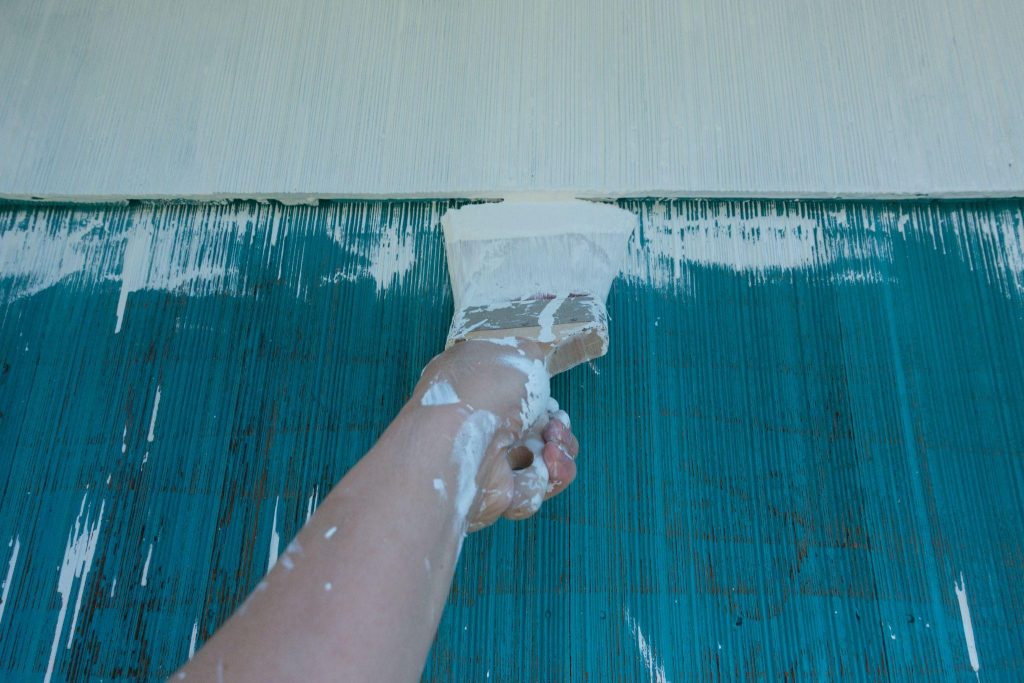
Apart from enhancing the overall beauty of your pool area, many homeowners are surprised to discover some of the time- and cost-saving benefits of concrete deck paint. Here are just a few:
Improves Beauty
Like a blank canvas, unfinished concrete quickly becomes strikingly beautiful with the right coat of paint. The benefit isn’t limited to the concrete itself, however. By selecting a color that coordinates with the surrounding area, a painted pool deck can also improve the overall beauty and appearance of your pool area.
Easy to Apply
Concrete is incredibly easy to paint, thanks in part to its porous surface. With the right team and painting equipment, most concrete pool decks can be painted within an afternoon. Combined with a final coat of deck waterproofing, it only takes a day to secure the beauty and strength of your concrete surfaces for years to come.
Inexpensive
While costs vary depending on paint types and deck sizes, one thing is usually true: Concrete pool deck paint is one of the most cost-effective ways to finish your pool deck. This cost-effectiveness becomes especially apparent when comparing other pool deck materials and finishes. Where wood and masonry decks require expensive finishes and time-consuming application, concrete decks are quick, easy, and inexpensive to paint.
Protects Surfaces
Combined with a top coat of waterproof deck coating, a coat of paint can protect concrete from pool water, rain, and other potential vectors for water damage. Paints, waterproof coatings, and other surface finishes are especially important for preserving the strength and beauty of concrete. While concrete’s porosity makes it easy to apply paint, it also makes it especially susceptible to water infiltration and damage. As a result, deck paints and waterproof coatings aren’t just nice add-ons—they’re essential for preserving your deck!
5 Most Popular Colors for Concrete Pool Deck Paint
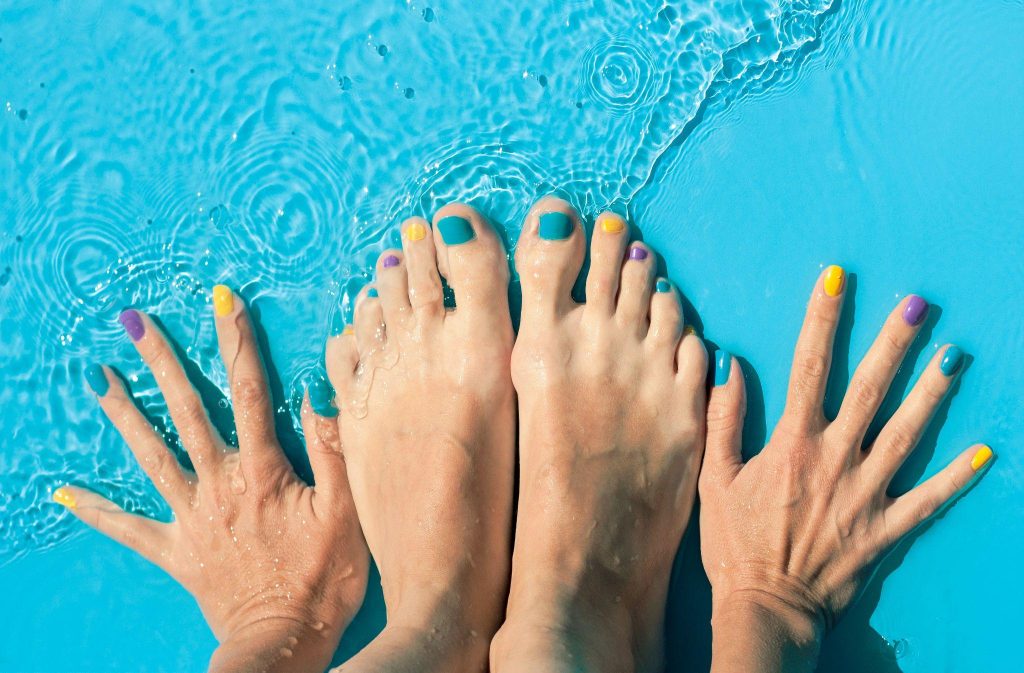
Whether you want your concrete deck to blend into its surroundings or completely pop with color, one of these popular colors can help:
1. Whites and Off-Whites
Perhaps the most classic pool deck colors, whites, off-whites, and beiges evoke images of soft, sandy beaches. Whites and other light colors also naturally reflect the sun, keeping the surface refreshingly cool on hot days. Many people also prefer shades of whites for their neutrality, which is useful for those who don’t want the pool deck to draw attention away from surrounding structures.
2. Blues and Grays
As the colors most closely associated with water and the sea, blues and grays are excellent choices for a pool deck color. While unfinished concrete is gray, adding a deeper or lighter gray provides a smoother, cleaner appearance with all the extra benefits of concrete pool deck paint, of course. Blues provide a similar upgrade; however, certain tints may be especially complementary to the brilliant blue of the swimming pool itself.
3. Tans and Browns
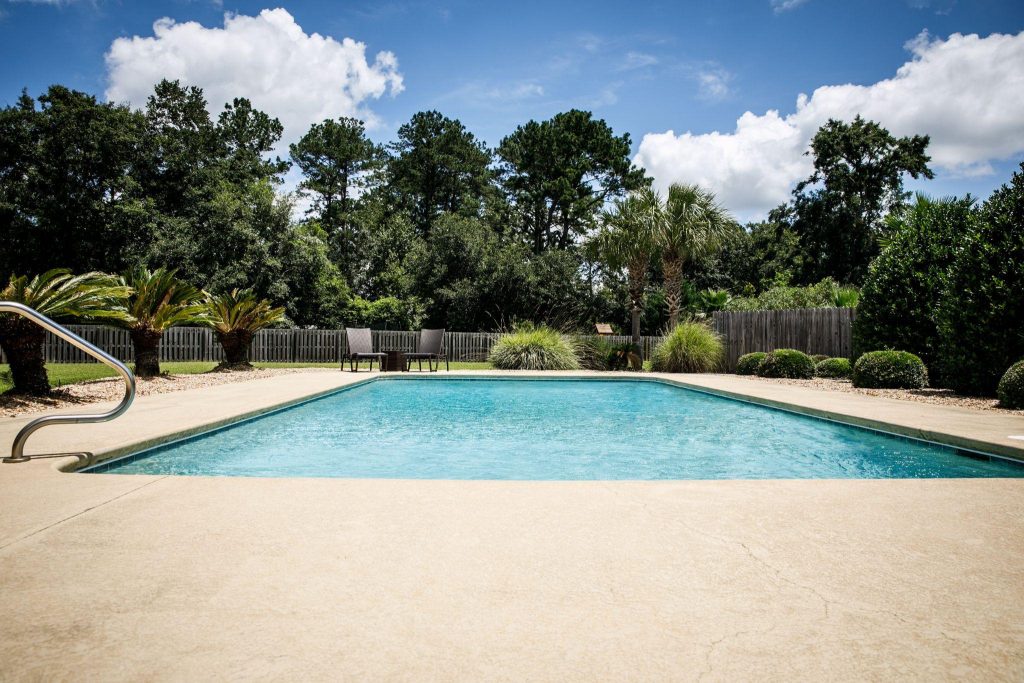
Tans and browns are a great way to replicate traditional masonry and other earthy surroundings.
Where reddish-brown and tans can make a concrete slab look like terracotta masonry, light and dark shades of brown can replicate dirt and earth. If you’re looking to make your pool look like a desert oasis or a swimming hole, these are the colors for you.
4. Color Mixtures
Why stick with just one color? With multiple colors, you can create all kinds of pleasing patterns and creative combinations. From free-flowing floral patterns to strong geometric shapes, your concrete pool deck serves as a blank canvas for your ideas. Plus, with an additional layer of deck waterproofing, you can preserve your designs for years to come.
5. Bold Colors
If you really want to make your pool deck “pop,” consider using bright and bold colors. Though your pool deck won’t blend in as well with the surroundings, that could be a benefit if you have a uniquely shaped pool deck. In some cases, it may also make sense to match the pool deck color to surrounding structures.
Concrete Pool Deck Paint Design Ideas
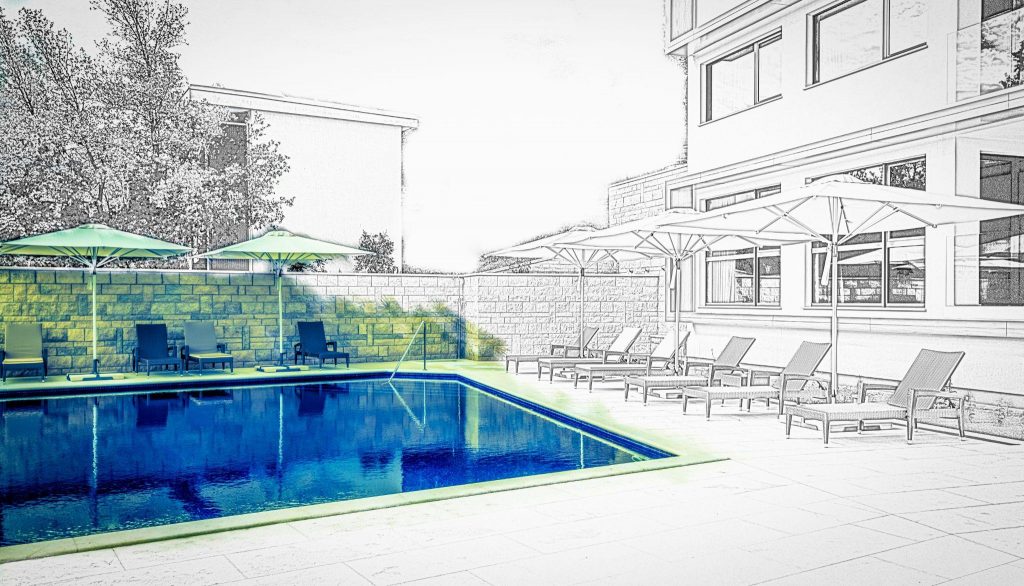
Unlike other pool deck materials, poured concrete offers a solid, flat surface without planks or tiles. As a result, the design and appearance of your concrete pool deck is entirely up to you. Here are just a few popular design ideas to get you started:
Solid Color with Trim
Perhaps the most popular design choice, a solid color with a contrasting trim is timeless, sophisticated, and easy to achieve. While the trim is usually either a lighter or darker shade of the deck color, there’s no reason you can’t use a completely different color. One popular example is a solid white deck with a bright blue trim—a combination popular in coastal Greece.
Faux Tiles
Why fuss with messy grout and expensive tiles when you can just paint them on? Though this idea might sound a bit tacky, it’s surprisingly convincing when using colors that replicate natural stone. By blending and mixing different earthy colors, you can give your solid concrete the look of a hand-laid masonry patio at a fraction of the cost.
Geometric Patterns
While square, tile-like patterns are great choices for pool decks, you can also use paint to create geometric patterns of other shapes. One popular example is a repeating hexagonal pattern, where each hexagon forms an individual tile. Using different shades of paint, you can alternate colors across the deck and even create a color gradient that gradually changes between the edges of your deck. The possibilities are endless!
Floral Patterns
If a repeating geometric pattern seems a little too traditional, a floral pattern is a great alternative. Whether you choose to embellish your concrete deck with an intricate network of budding vines or simply paint a border of flowers, floral patterns are always a dazzling choice. While they may take a bit more work than geometric patterns, they’re worth the effort if you have a particularly “flowery” design in mind.
Pattern Combinations
Solid? Geometric? Floral? Why choose one when you can choose them all! There are many ways to combine popular pool deck patterns. For example, a solid grid of square “tiles” is easily improved by adding floral embellishments along its borders. Similarly, a solid color can be accentuated with a border of either repeating shapes or floral patterns or pretty much anything else you might think of.
How to Apply Concrete Pool Deck Paint to an Existing Deck
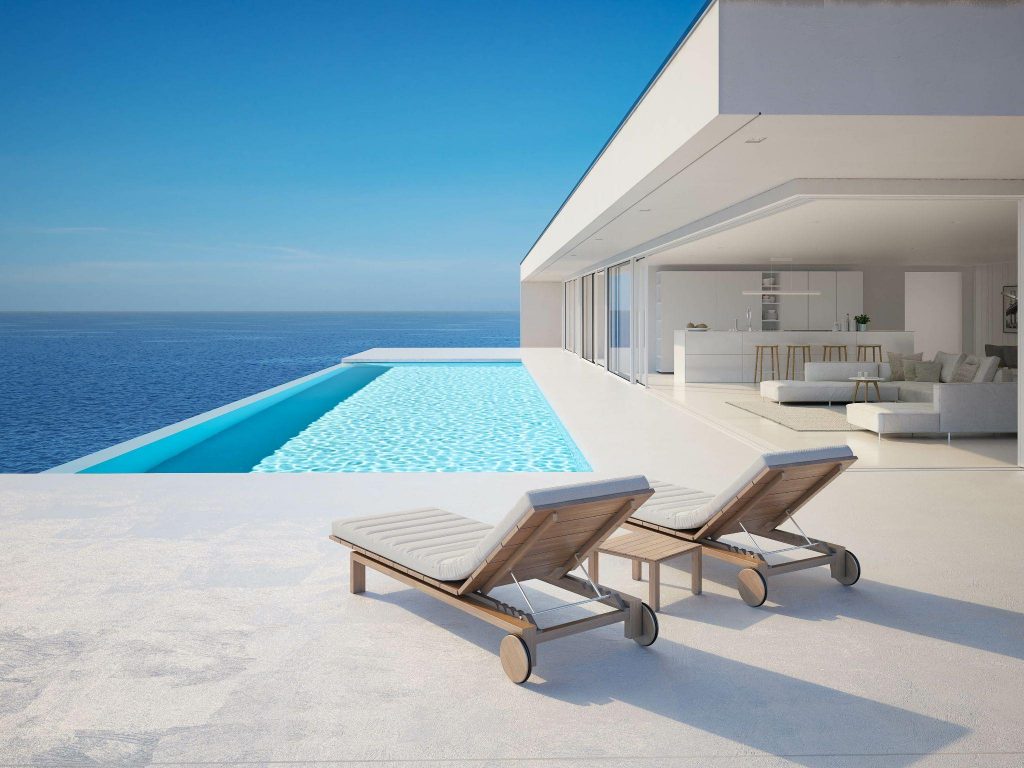
No matter what color or design you choose, the pool deck painting process is usually the same.
Like any surface finishing job, one of the biggest steps of the painting process is surface preparation. Here, your concrete pool deck must be completely cleaned and even stripped of existing finishes before painting can begin.
Once the surface is ready, painting can begin. While solid colors are easily applied with a spray gun or roller, more intricate patterns, including geometric and floral elements, may require a little more work. Thankfully, it’s easy to use a template to quickly apply patterns of the perfect size and shape.
With your concrete pool deck painted to your liking, it’s time to protect your investment with a coat of deck waterproofing. Waterproofing not only protects your paint, however: It also prevents water from seeping into the porous concrete underneath.
The right waterproof coating applied the right way can secure the beauty and strength of your concrete pool deck for years to come. Though you’ll need to apply a new coat at one point, reapplication is just as effective and easy as the first coat.
Protect Your Paint with Pool Deck Waterproofing from Capital Deck & Stair
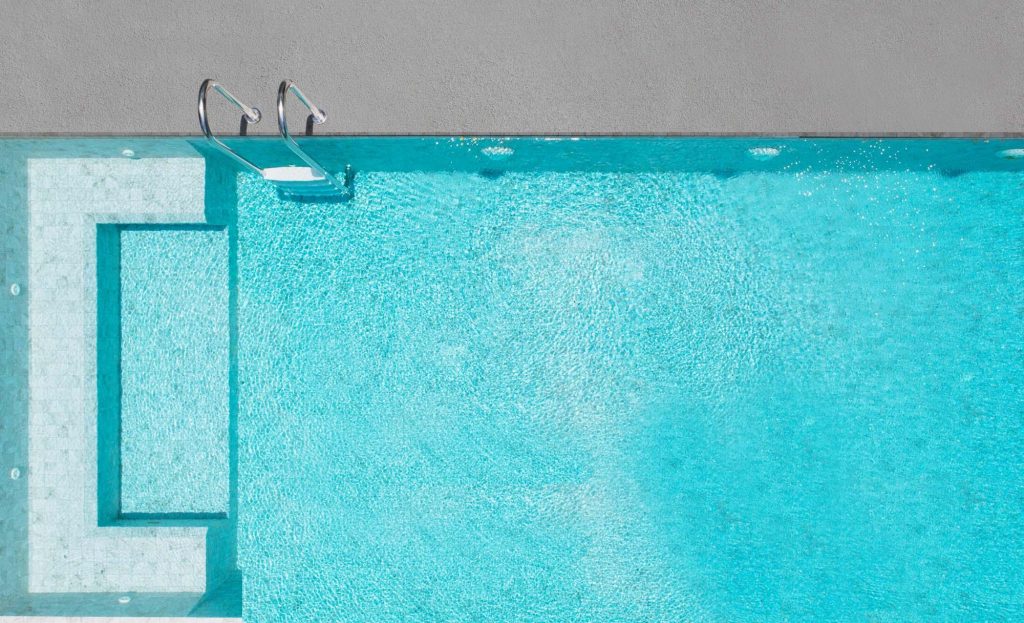
Though it’s possible to paint your own deck and even apply your own waterproofing, only an expert team can guarantee great results and an attractive finish. For over 30 years, the Capital Deck & Stair team has provided waterproofing services for homes and businesses throughout Southern California. All of our work is backed by a warranty and the same quick, professional service that our customers have come to rely on.
For more information and to receive a free estimate, call Capital Deck & Stair at (866)582-7481 or visit our pool deck waterproofing page.
How Important Is Balcony Deck Waterproofing? 5 Surprising Benefits
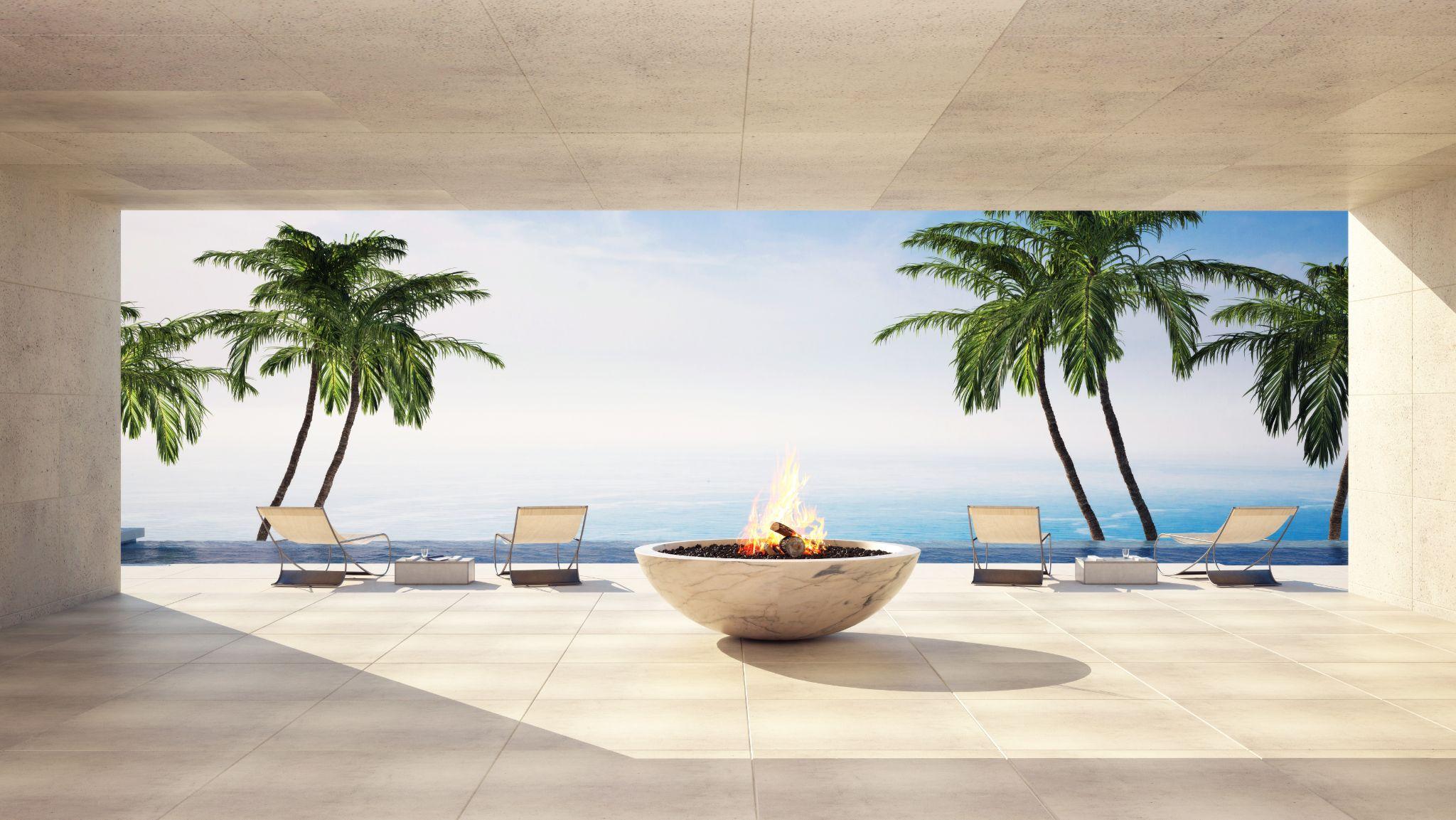
Deck waterproofing may seem like just an optional add-on, but it’s more important than many might realize. While a deck or balcony can last several years without waterproofing, its lifespan and safety will become severely limited once wind, rain, and weather start taking their toll. As a result, deck waterproofing isn’t just an add-on—it’s an essential!
Thankfully, balcony deck waterproofing is not only quick and affordable but also comes with many benefits beyond just protecting your investment. Read on to learn more about the benefits of our deck waterproofing process.
What Is Balcony Deck Waterproofing?
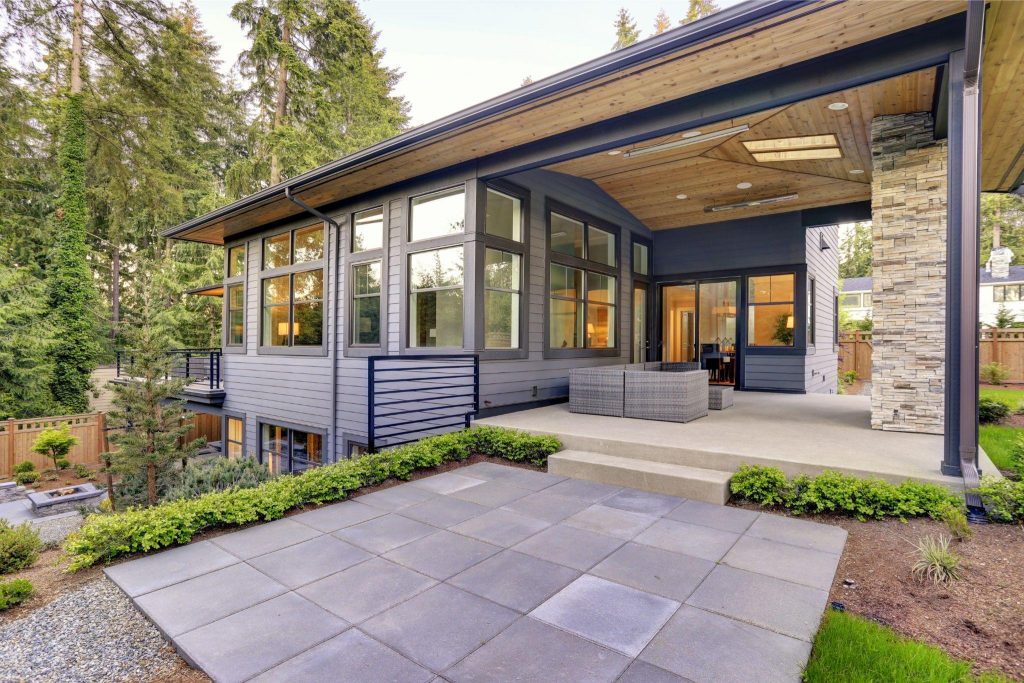
Balcony deck waterproofing is a durable surface treatment that seals your deck or balcony’s surface from water and wear. Most deck waterproofing solutions are a multi-layer waterproofing system that takes care of your deck for up to 25-30 years when properly maintained.
During that time, your decking material will remain sealed and protected from harmful water damage and day-to-day wear and tear.
There’s more to balcony deck waterproofing than just protecting your deck, however. Find out more in the next section as we explore some of the hidden benefits of protecting your deck or balcony!
5 Benefits of Balcony Deck Waterproofing
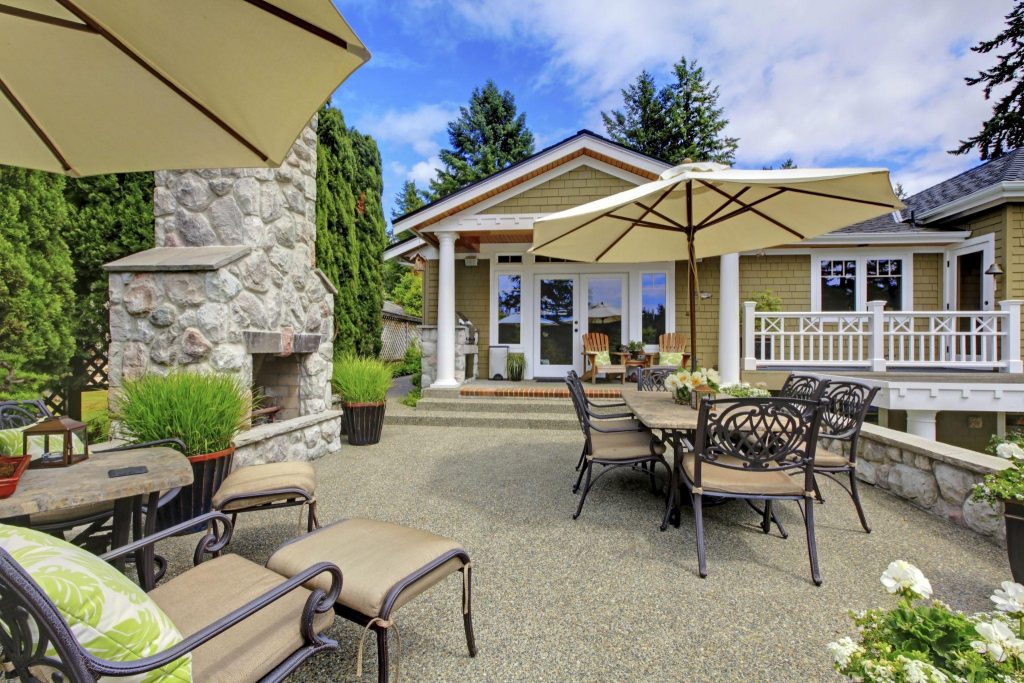
Keeping your deck dry does more than prevent water damage. From avoiding expensive repairs to keeping your favorite plants and flowers, deck waterproofing comes with many benefits.
1. Protects Against Water Damage
While it may seem a bit obvious, protecting against water damage is the biggest benefit of deck waterproofing. In fact, most other benefits of deck waterproofing stem from this benefit alone. Protecting your deck against water does more than just protect the deck itself; it can also prevent water damage from infiltrating your home and surrounding structures, increase safety for foot traffic, and even prevent costly (and dangerous) rot and mold.
Needless to say, avoiding water damage is very important and, in the case of waterproof coatings, a great investment, but the benefits aren’t limited to keeping out water!
2. Prevents Wear and Tear
Foot traffic, furniture, and other heavy loads can cause wear and tear to your deck over time. A durable waterproof coating is one way to protect your deck against this kind of damage while also sealing your deck from moisture. Like with water damage, wear and tear can gradually degrade your deck over time. While perhaps not as extreme as rot or mold, worn surfaces have a poor appearance and, depending on the deck material, can even pose a safety hazard through splinters and cracks.
3. Improves Safety
Waterproofing improves safety in many ways. In addition to keeping your deck free of slippery surfaces caused by standing water, waterproof coatings also create a high-traction surface for regular foot traffic. Further, by preventing rot and decay caused by water damage, waterproofing also preserves the structural integrity—and, therefore, overall safety—of your deck or balcony.
4. Saves Money and Expensive Repairs
Despite a small upfront cost, waterproofing can save thousands of dollars in costly repairs and replacements over the years. By effectively sealing your deck from damage caused by water, wear, and other elements, waterproofing can increase the lifespan of your deck by many years. Untreated decks and balconies often require expensive and time-consuming repairs after only a few years of outside exposure.
As we’ve mentioned once already, waterproofing can also help prevent water infiltration and damage to surrounding homes and structures. This benefit only leads to further savings as your waterproof surface protects your entire property.
5. Better for Plants and Other Uses
Plants, fountains, and other water-based outdoor features aren’t always practical for untreated surfaces. With a waterproof coating, however, you can keep all of your favorite plants, flowers, and deck decor without having to worry about damage caused by water runoff. Keeping plants can also double the protection by absorbing some of the water that would otherwise reach your deck’s surface.
The Balcony Deck Waterproofing Process
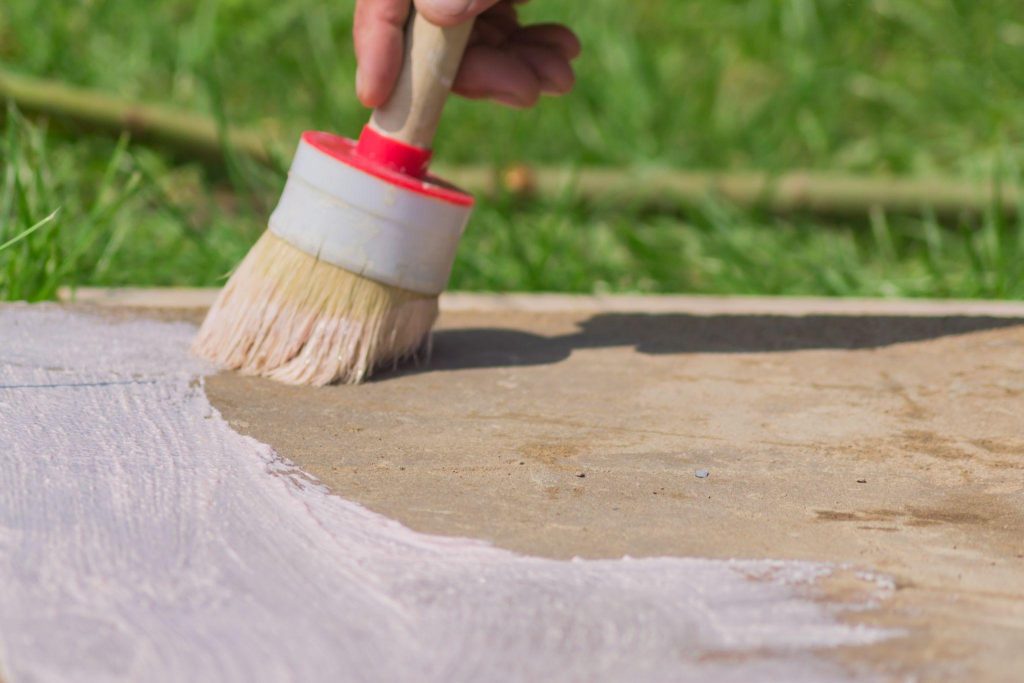
Though waterproofing is relatively straightforward, some of the prep work can be a bit complicated. Make sure you understand what goes into balcony deck waterproofing before you attempt to DIY!
1. Cleaning and Prep Work
Waterproof coatings require a clean, unfinished surface in order to adhere and coat properly. Before waterproofing, our professionals thoroughly clean and treat the existing surface. In some cases, existing or worn finishes also need to be stripped and removed before waterproofing can continue.
2. Corner and Edge Treatments
The prep work isn’t done yet! After cleaning and stripping the surface, the corners of your deck and balcony will require a preliminary waterproofing. This step is important for multiple reasons:
- ● First, falling water tends to collect towards corners and edges, making these areas especially prone to water damage and infiltration.
- ● Second, corners and edges present many nooks and crannies for water to enter, making it crucial to give these areas extra attention.
While some waterproofing companies might perform this step by applying a first coat of waterproofing to these areas, our professionals use heavy-duty mesh strips to reinforce corners, edges, and drains.
3. Applying Waterproofing
Finally, it’s time for waterproofing. With the surfaces cleaned, stripped, and reinforced, waterproofing is applied in one or two coats. As you might imagine, prep work takes up most of the waterproofing process. Once it’s time to apply the coating, the process moves along very quickly; apart from setting time, most decks and balconies are usable within a day after waterproofing!
5 step system:
- 1. Plywood – make sure that the plywood is the proper thickness and quality and free from dry rot or damage
- 2. Metal Lathe – For rigidity
- 3. Waterproof silica cement – Fills the lathe and provides the first waterproof layer
- 4. Fiberglass and resin – Provides the second waterproof layer and prevents cracking
- 5. Waterproof silica cement – 2nd coat of cement for another waterproof layer
- 6. Texture and Sealer – Different finishing choices are available and finish with a colored deck sealer.
4. Long-Term Maintenance
Though waterproof coatings are relatively low-maintenance, they still wear down over time. As a result, you’ll likely need to reseal the waterproofing every 5 years with cement deck sealer. With prep work done right the first time, however, reapplications are easy, quick, and inexpensive. In the meantime, you can extend the life of both your coating and outdoor surface by keeping it clean, shaded, and free of water whenever possible.
Why DIY? Call the Professionals at Capital Deck & Stair!
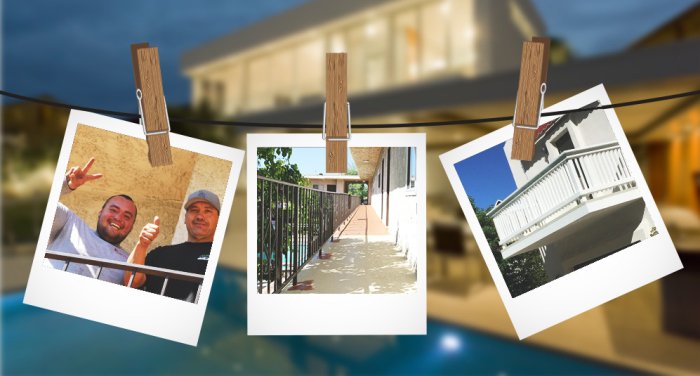
Though it’s possible to apply a waterproof coating yourself, only a professional has the skills and experience to ensure that it’s done right the first time. Backed by over 30 years of experience and our personal guarantee, the waterproofing experts at Capital Deck & Stair are ready to help protect your deck or balcony for years to come. For more information on our balcony deck waterproofing services, call us at (888) 508-2966 or request a free estimate!
How to Waterproof a Balcony
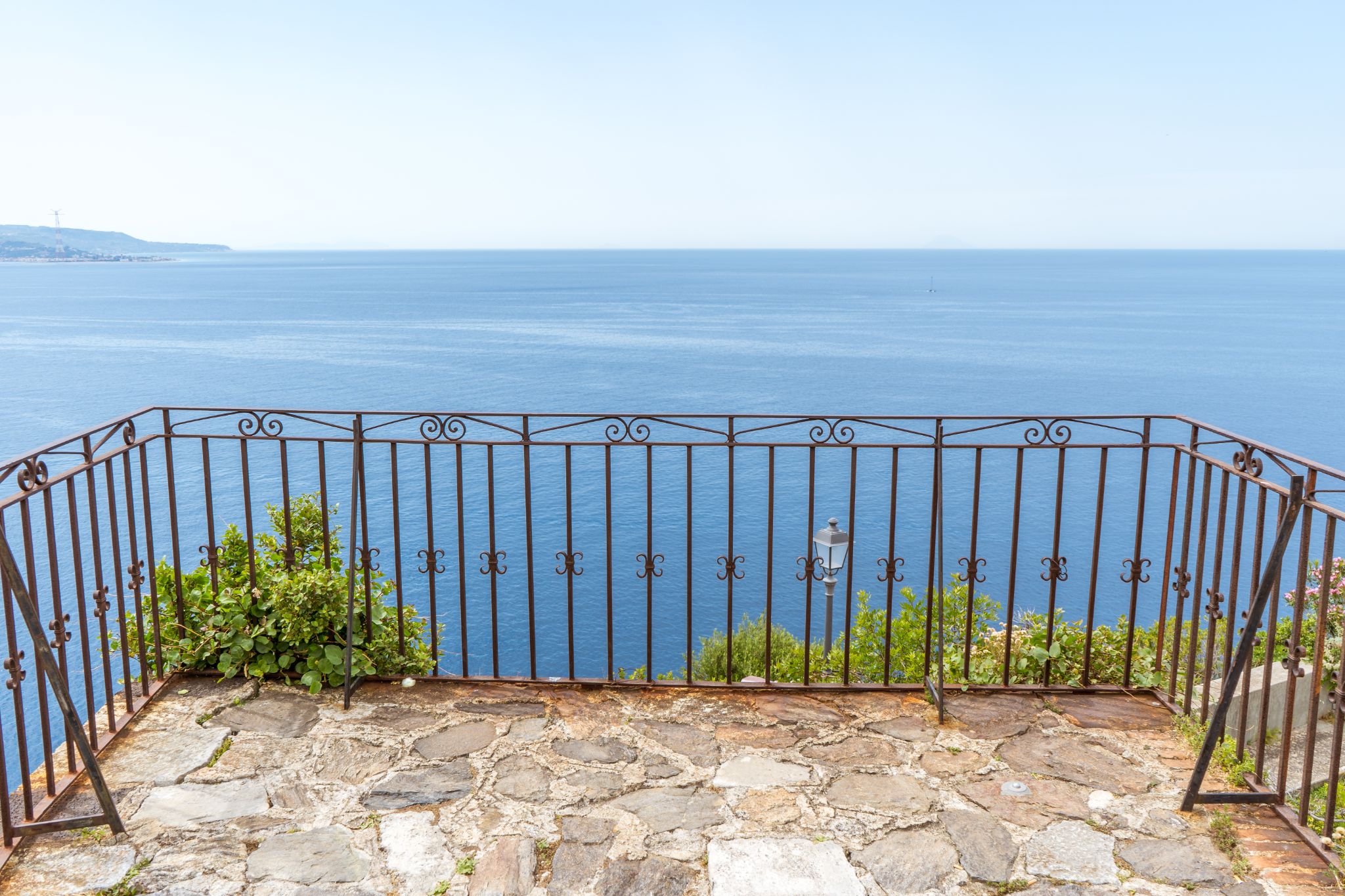
Waterproofing your balcony is one of the best ways to keep it strong and safe for years to come. Since balconies are constantly exposed to rain and harsh weather conditions, balconies without thorough waterproofing often begin to deteriorate within only a few years.
Thankfully, there are a few things you can do to waterproof and secure your balcony. While there are a few DIY options available, a professional can help in some unexpected ways—many of which are also unexpectedly affordable.
About Balcony Waterproofing
Deck waterproofing is the process of applying a waterproof coating or sealant to your deck’s surface. While the exact coating used may vary depending on the surface material, the underlying principle is the same: creating a barrier between water and your deck.
Deck Dangers: The Importance of Waterproofing
Waterproofing is highly recommended for all outdoor surfaces, especially decks and balconies. Since these surfaces receive constant exposure to the elements, having a protective coating is crucial for protecting the structure against damage and deterioration.
Water and weather aren’t the only deck dangers, however: Foot traffic, furniture, and other forms of wear and tear can also affect your deck or balcony’s integrity. Thankfully, waterproof coatings also help guard against this extra wear and tear by enhancing the overall durability of your outdoor surfaces.
For many property owners, however, waterproofing seems more like an expensive “add on” than a valuable investment—until their balconies start falling apart, that is!
Do I Need Balcony Waterproofing?
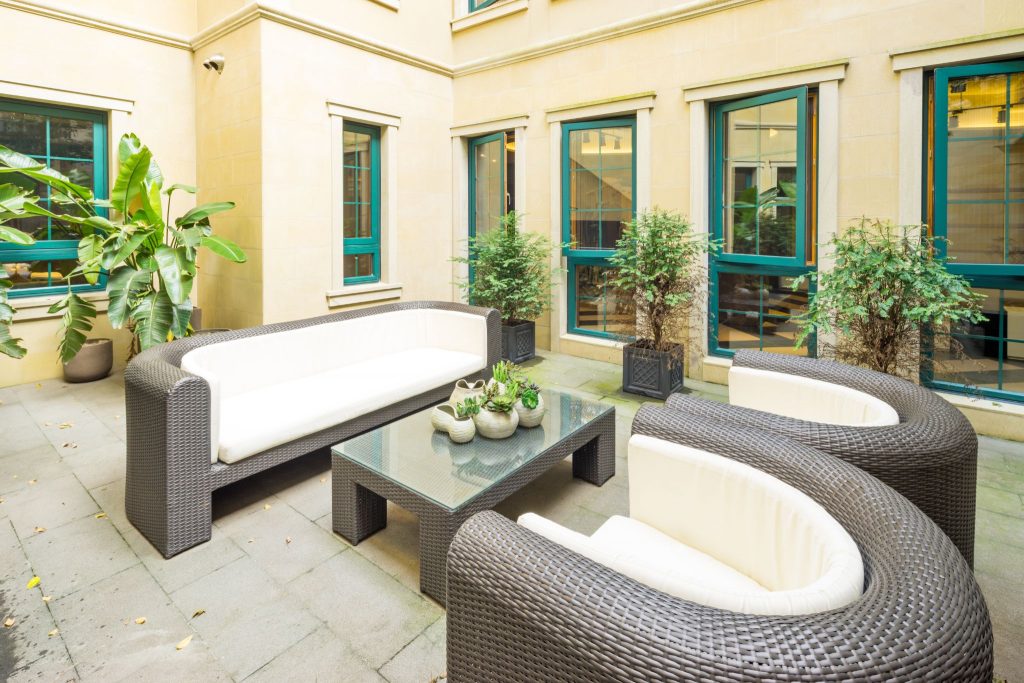
Every balcony in every climate can benefit from waterproofing in some way. The benefits are especially clear for balconies in wet and humid climates with high amounts of regular rainfall. Here, waterproofing not only protects surfaces during rainstorms but helps prevent rot and rust forming from ambient humidity and trapped water.
What about dry climates? Don’t be fooled: Balconies and decks in dry climates are especially susceptible to water damage since long periods of dryness can make wood and other materials soak up moisture like a sponge. As a result, when rain or water finally does come, the resulting water damage can be especially bad.
In addition to protecting the balcony itself, waterproofing also helps protect the surrounding structure from residual water damage while also maintaining and preserving your balcony’s original finish. With all these benefits, many property owners are quick to start waterproofing themselves.
The Balcony Waterproofing Process
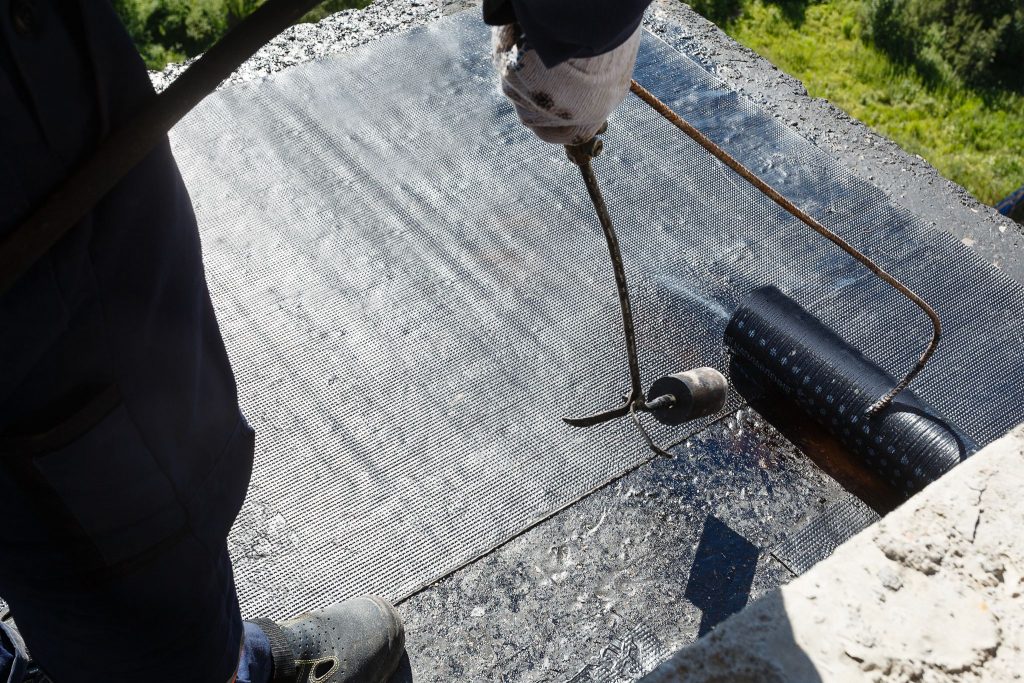
There’s more to balcony waterproofing than just brushing on a finish coat! Like painting and other surface treatments, waterproofing requires a careful combination of surface preparation, application, and finishing to form a proper seal.
Surface Preparation
Most waterproof coatings require a clean and well-prepared surface to adhere properly. While preparation methods can vary, depending on the surface material, all surfaces should be thoroughly cleaned and free of dirt, debris, and dust before coating.
While concrete or masonry surfaces require little preparation beyond cleaning, wood and metal—two very common balcony materials—require extra preparation. Wood, for example, should be thoroughly finished and sanded before applying waterproofing. Metal surfaces should also be completely free of rust; otherwise, the rust will continue to develop regardless of the waterproof coating.
In addition to cleaning the surface, you may also need to fill in cracks with a polyurethane sealant or apply a primer. Whether you’ll need to use a primer depends on your balcony’s surface material and the type of waterproof coating you’ve chosen.
As you might be able to imagine, most of the work involved with waterproofing is in the preparation! Just like with painting and finishing, however, preparation will determine the quality and integrity of the waterproof coating.
Waterproofing Application
With the surface thoroughly prepared, the waterproofing can finally begin!
Depending on your balcony’s shape and construction, waterproofing will require laying strips of PVC/mesh waterproofing membrane along all corners and joints. These strips are first secured using a liquid waterproof coating as an adhesive and laying them on while the coating is still wet. Once the strips are set, a second coat of waterproofing is applied over the strips to seal them completely.
It’s also worth applying the same process to the edges and drains of your balcony where possible. Edges and drains receive the greatest amounts of water flow and should also be sealed with PVC/mesh strips before applying the final coat.
Finally, with mesh applied to corners and other hard-to-reach or “high flow” areas, a final coat of liquid waterproof coating is applied using a roller brush or spray applicator. Once the coat dries, the balcony will be completely waterproof—assuming preparation and application were done correctly, of course!
Long-Term Care
Though waterproof balconies are relatively low-maintenance, the coating can start to wear down after years of wear and tear. As a result, your balcony will likely require regular re-coatings over the course of its life. How often you’ll need to re-coat your balcony will depend on your climate and your balcony’s exposure to rain and regular use.
DIY or Professional?
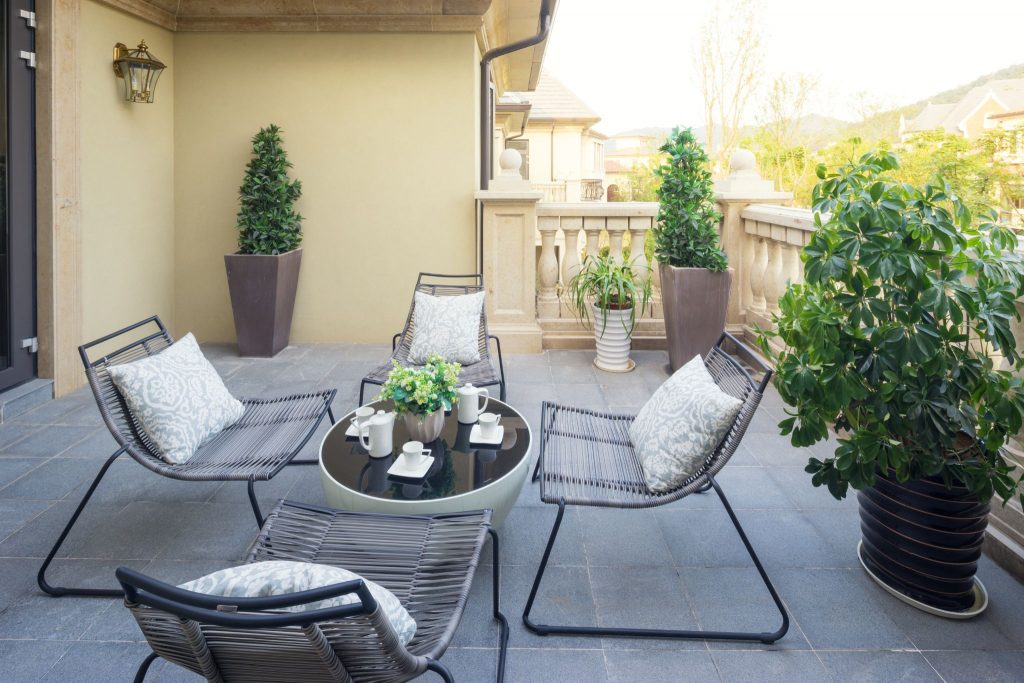
While it’s definitely possible to waterproof your balcony by yourself, it’s an incredibly laborious process that requires careful planning and preparation.
Since a waterproofing job can easily go awry without the right application, it’s usually best to call a professional to ensure a thorough job and ultimately save time and money. Waterproofing professionals will also be able to identify key areas on your balcony that may need more waterproofing than others.
When in doubt, the Capital Deck & Stair team is here to help! For over 30 years, our family-owned-and-operated team has helped property owners throughout the Los Angeles area waterproof and protect their balconies, decks, and more. For more information and a free quote, call us at (888) 508-2966!
Live by the Beach? These 7 Home Upgrades Prevent Environmental Damage
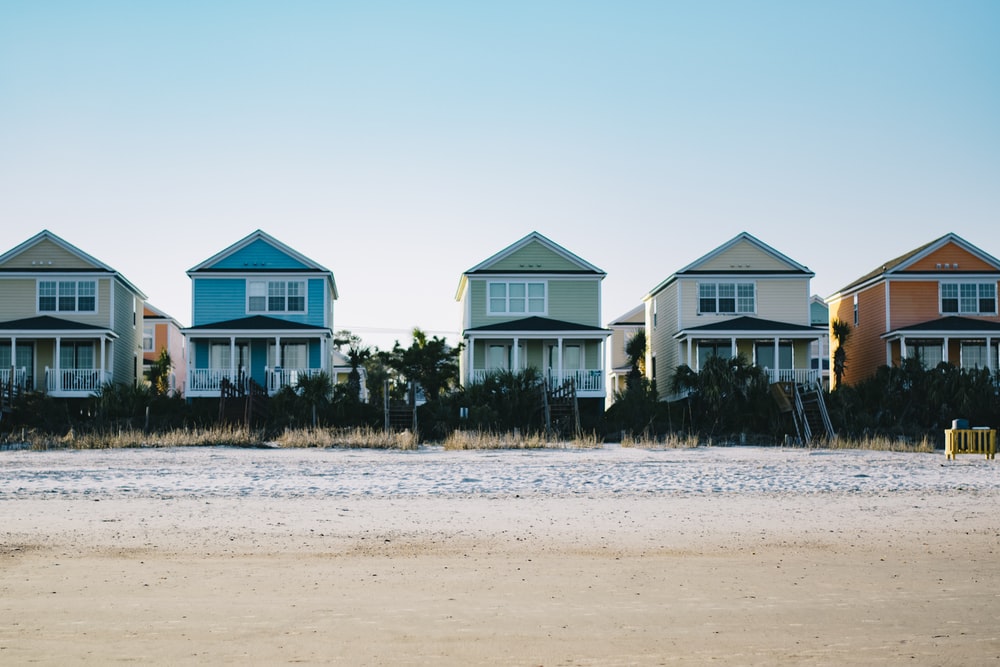
It’s wonderful to live by the beach, but the beach can take its toll on your property over time; salty sea spray, changing tides, and powerful storms can wear away and corrode your property. As a result, you’ll need to be extra vigilant when it comes to protecting your beach property from the elements.
Here are seven ways you can help your property stem the tide of time—and, of course, the tide itself!
Elevate the Building
While elevating your entire property might not be an easy task if it’s already built, it’s a great option for new properties—and, at times, a necessary option for existing ones. As water levels slowly rise around the world, many beachfront properties are at risk of being flooded by unusually high tides and storm surges.
In most cases, elevating a building requires elevating the base through strong piles, usually made from either steel or concrete. As most beachfront homes don’t have foundations, it’s usually possible to elevate an existing property.
Use Weatherproof Paints and Finishes
Weatherproof paints and finishes are among the most effective means of protecting your property from the ocean environment, particularly salty sea spray. Paints and finishes act as a sort of “barrier” between corrosive elements and your property’s structure, which can help significantly to prolong life.
However, waterproof paints and finishes need to be replaced regularly—the salty air and ocean water have to corrode something, after all! Be on the lookout for signs of worn finish or, if your property isn’t already painted or finished properly, be sure to apply the right finishes as soon as possible.
Put Covers on Your Furniture and Store Your Belongings
Your home isn’t the only thing that can be damaged by the ocean air: Your outdoor furniture and belongings can be too! Unfortunately, unlike your property, outdoor furniture usually doesn’t have the same corrosion-resistant finishes.
As a result, be sure to put covers over outdoor furniture and secure unused belongings in secure locations. Doing so will not only protect these things from corrosion but also help keep them secure and undamaged during major storms.
Use Corrosion-Resistant Hardware
When most people think of weatherproofing, they immediately think of larger surfaces such as siding and framing. While these components are crucial to your property’s structural stability, the hardware holding it all together—nails, screws, and so on—are easily ignored. Worst of all, it’s the hardware that keeps everything held together!
Be sure to select hardware that is weather- and corrosion-resistant, such as that made with galvanized metals. Unlike hardware in plain steel or iron, galvanized hardware won’t rust or corrode in the presence of salt or water.
Keep Up with Regular Maintenance
Even the strongest materials and finishes wear down over time, especially those used in beachfront homes. Nothing on your property is permanent; nearly everything will have to be replaced at one point. The key to keeping your property in top shape is to regularly maintain surface finishes and fittings and, perhaps most importantly, replace damaged areas as soon as possible.
Deck Waterproofing
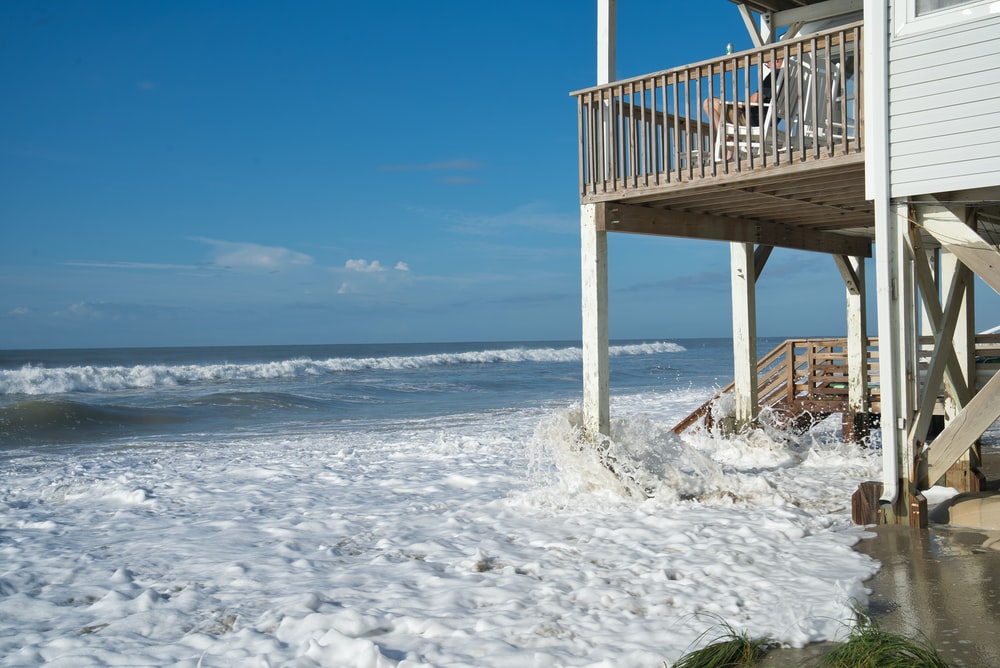
Most beachfront homes have large decks, and for good reason—they’re usually the best place to enjoy the ocean view! Unfortunately, with their large, exposed surface areas, decks usually endure most of the damage from sea air, water, and storms.
One way to keep your deck in top shape is to invest in a waterproof deck coating. For more information on deck waterproofing solutions, call our deck treatment specialists at (888) 508-2966.
The Ultimate Deck Safety Checklist

Decks are great places to unwind, relax, read a book, enjoy meals outdoors, cook on the grill, and more. You need to make sure you and your family are safe and secure on your deck. With people spend more time at home and outdoors, now is a great time to complete our ultimate deck safety checklist.
1. Remove everything from the deck.
To do a proper inspection, you need to remove patio furniture, your grill, and other such things from the deck. You’ll need to do this anyway, at some point, for full deck maintenance and deck waterproofing.
2. Check for mold and mildew.
Just because you don’t see mold and mildew on the top of decking boards, this doesn’t mean it isn’t hiding. You need to look in between the boards and under the deck, on the backside of the boards. Some decks are closer to the ground than others, so this might be a challenge. Don’t forget to check the base of the handrails and railings too.
3. Inspect screws, fasteners, etc.
Verify that all deck screws are tight and any fasteners or other hardware are secure. If you find anything loose, tighten it back up. If they are looking rusty, replace them if possible. If not, sand the rust off before you reseal the deck, and then make sure to apply the paint or sealant over the deck hardware as well.
4. Check for rotting and cracking decking boards, railings, supports, etc.
Wood rot occurs when decks aren’t sealed annually. The wood will feel soft if it has been oversaturated with water. When it dries out, it becomes brittle and cracks. Replace any rotting or cracking parts of the deck. If the deck is more than 10 years old, then it is better to just replace the deck with a new one.
5. Inspect the deck supports.
If your deck is elevated off the ground, you need to check the deck supports for mold, mildew, rot, cracks, and so on. If the supports seem wobbly, then you will want to call a professional to have the supports replaced so the deck doesn’t come crashing down when you and your family are on it.
6. Inspect the stairs.
Verify the boards on the stairs are secure and safe. Grab handrails and gently move back and forth to confirm they are not loose. If they move more than a quarter of an inch, in either direction, something is wrong that needs to be repaired.
7. Check all electrical wiring, lighting, and the gas line.
Make sure all electrical outlets are working correctly. If you have exposed electrical wiring, verify the insulation is not cracked and that there is no exposed metal wiring. If you had a gas line connected to your grill, confirm there are no gas leaks by rubbing dish soap on the gas pipe and turning the gas on. If the soap starts to bubble, it means there is a leak.
8. Detail clean the deck.
Wash down the entire deck, including the decking boards, railings, handrails, steps, etc. You can use a power washer as long as you plan on resealing or repainting the wood once it is dry. At least once a month, make sure to sweep the deck off and rinse it down, using a garden hose to remove dust, dirt, and debris.
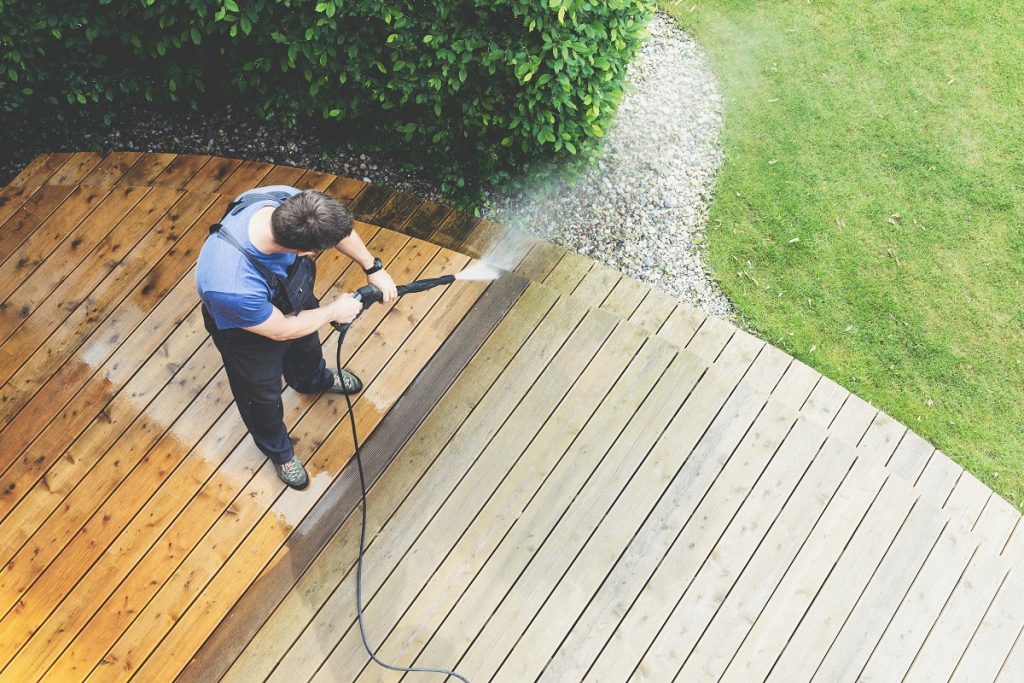
9. Waterproof the deck flooring.
After the deck has been fully inspected, repairs have been made, and it has been detailed cleaned, the last step before putting everything back onto the deck is to waterproof the deck flooring. Waterproofing protects the wood from rot. Certain waterproofing agents are also mold- and mildew-resistant. Some even offer anti-slip protection.
By using our checklist, you will be all set to enjoy your deck all summer long! For deck waterproofing in Los Angeles and Orange County, please feel free to contact Capital Deck & Stair at (888) 508-2966 today!
RECENT POSTS
categories
- Uncategorized
- Waterproofing
- Stair Tread Replacement
- FAQ
- Balconies
- Precast Iron Stairs
- Outdoor Stairs
- Leisure Deck
- Deck Resurfacing
- Pool Decks
- Deck Maintenance
- Deck Staining
- Deck Materials
- Nonslip Deck Coatings
- Fiberglass Stairs
- Gardening
- Deck Repair
- Patio Waterpoofing
- Commercial waterproofing
- Concrete Waterproofing
